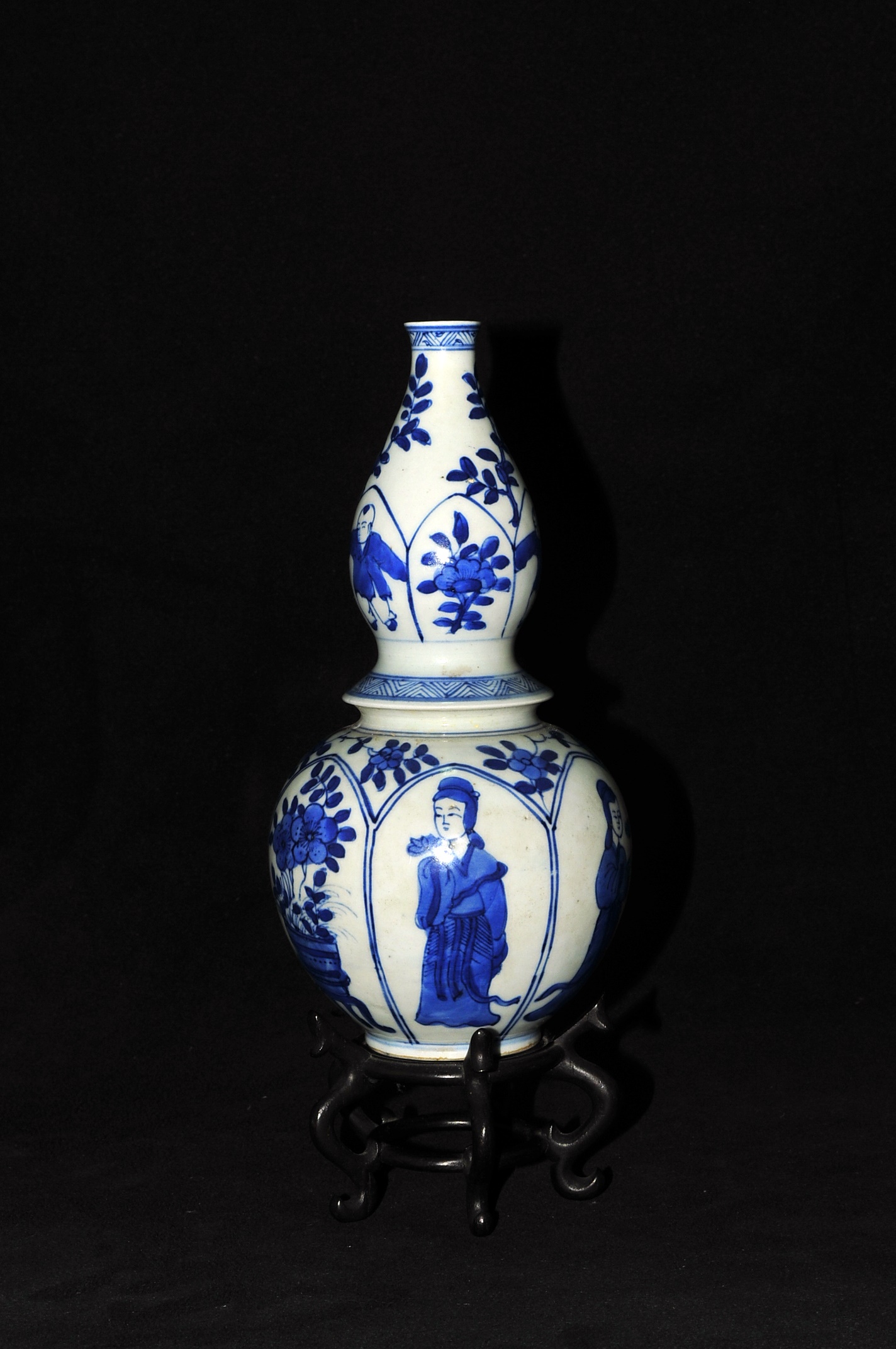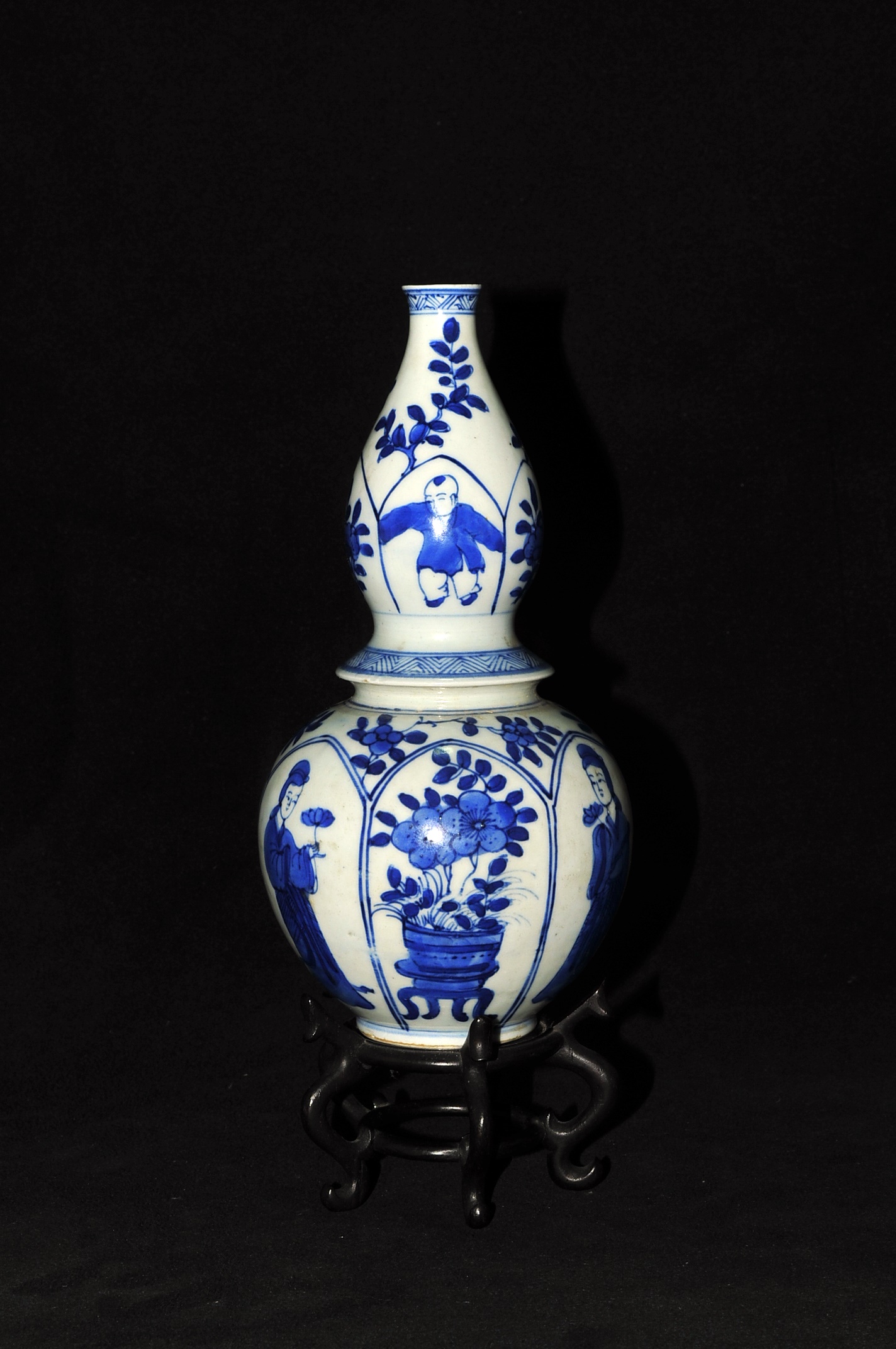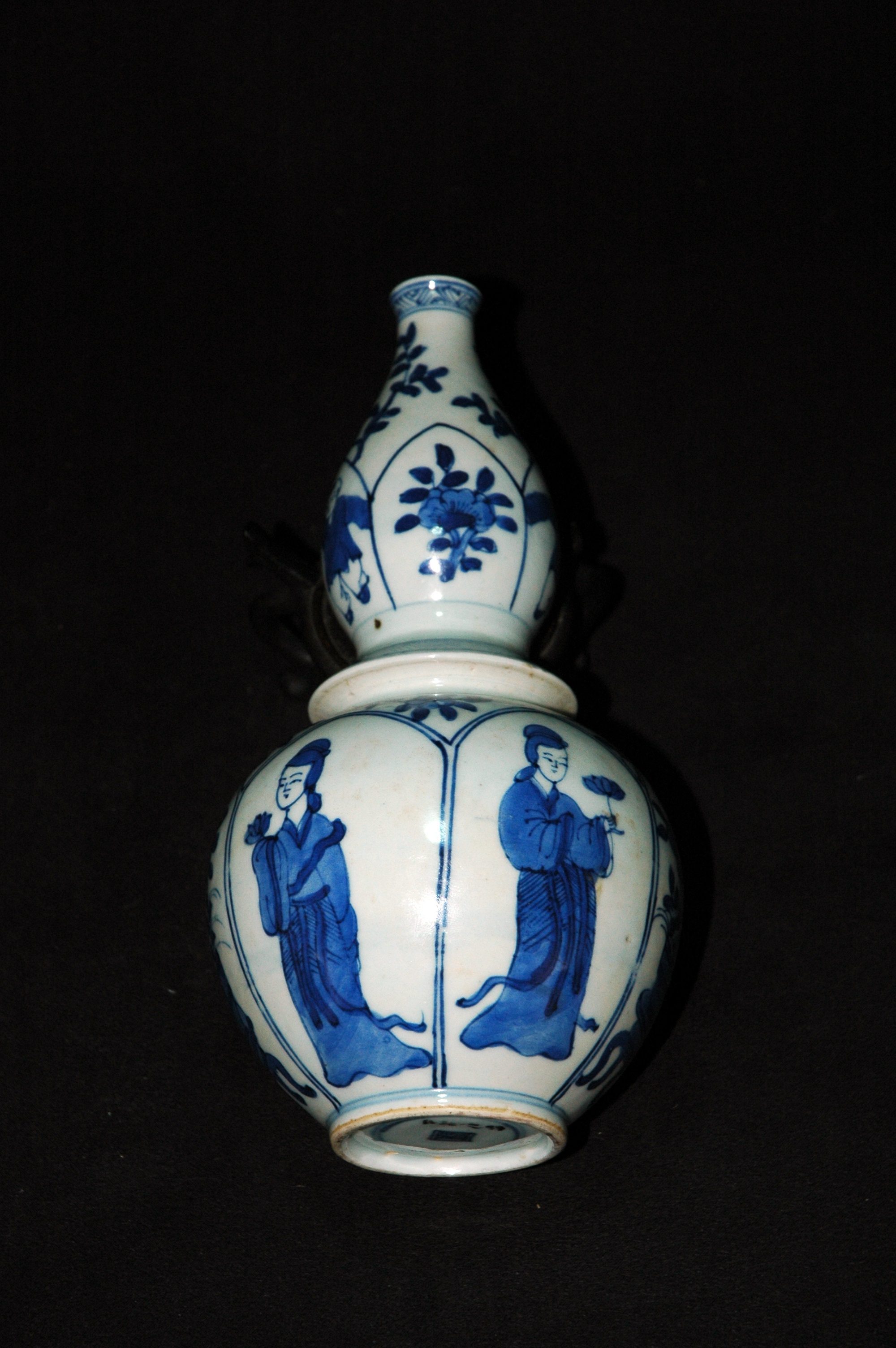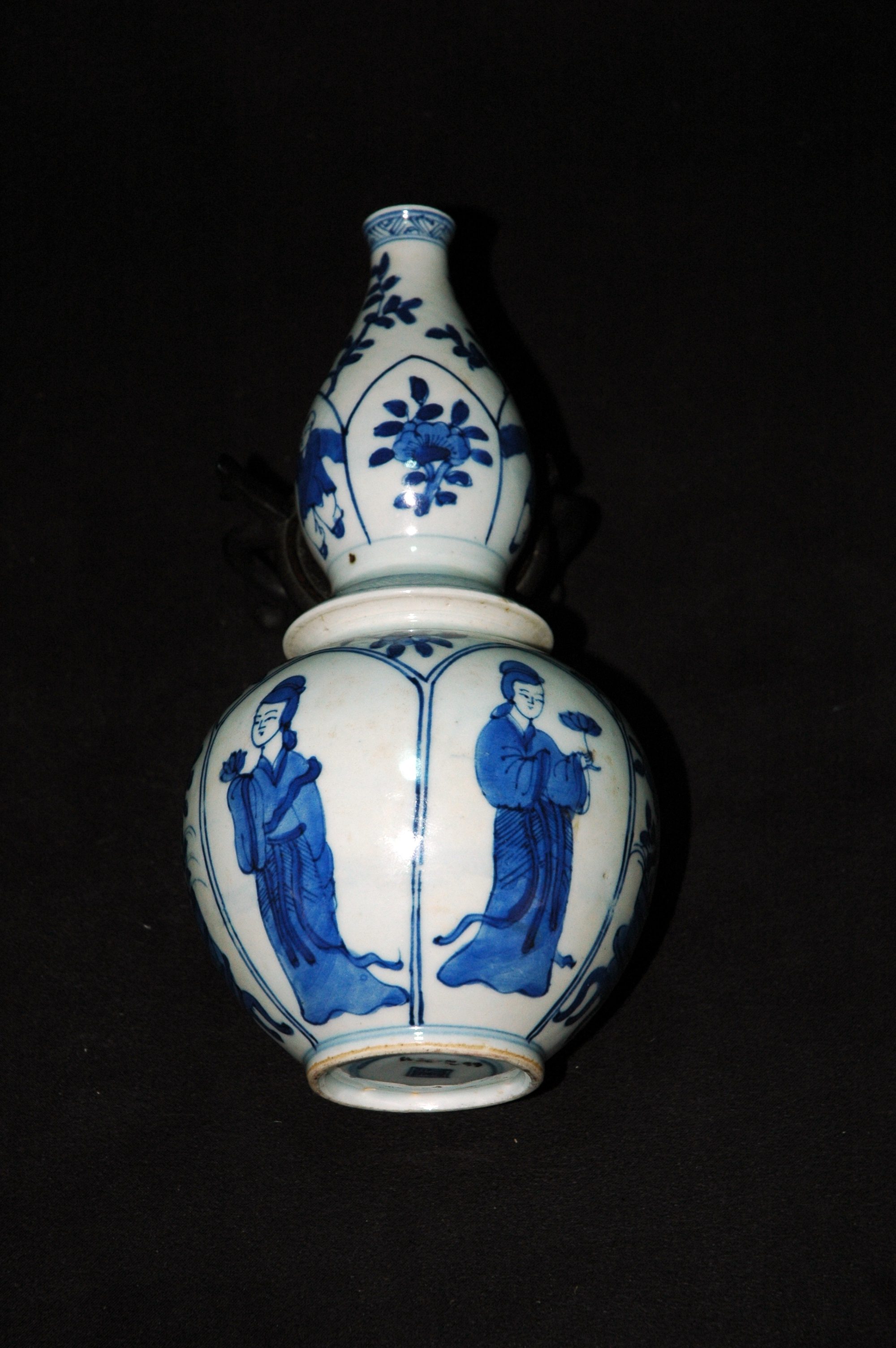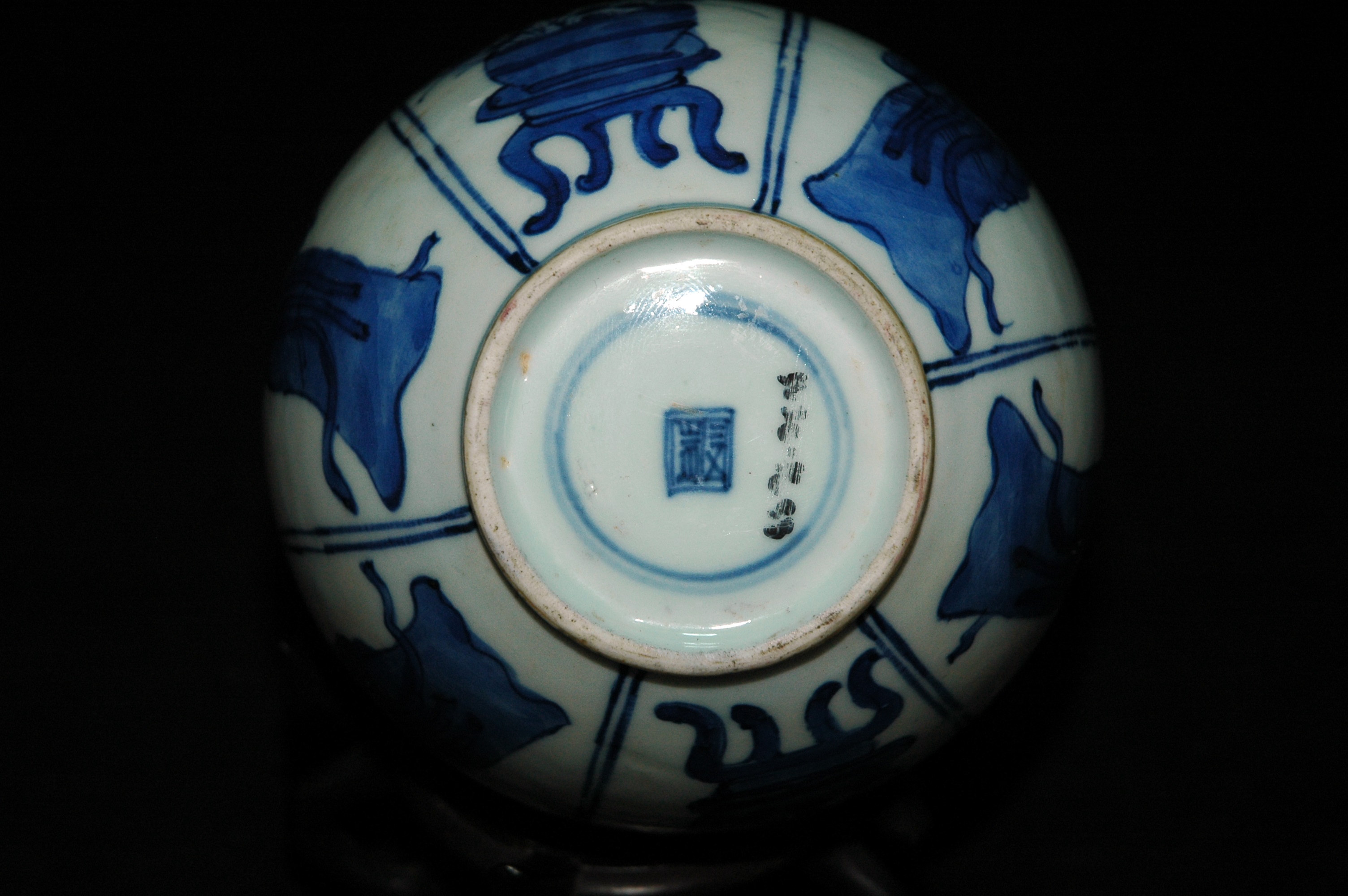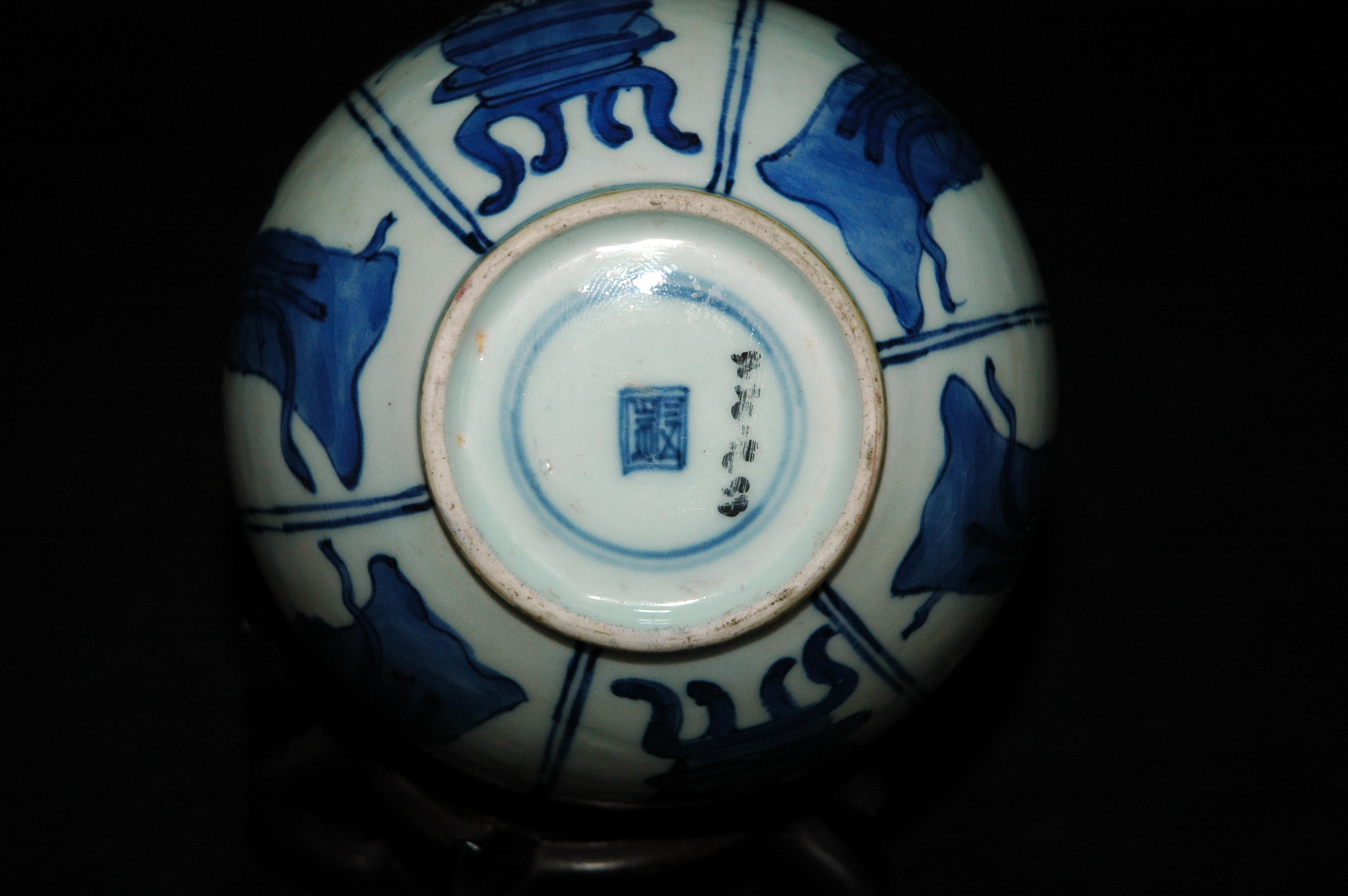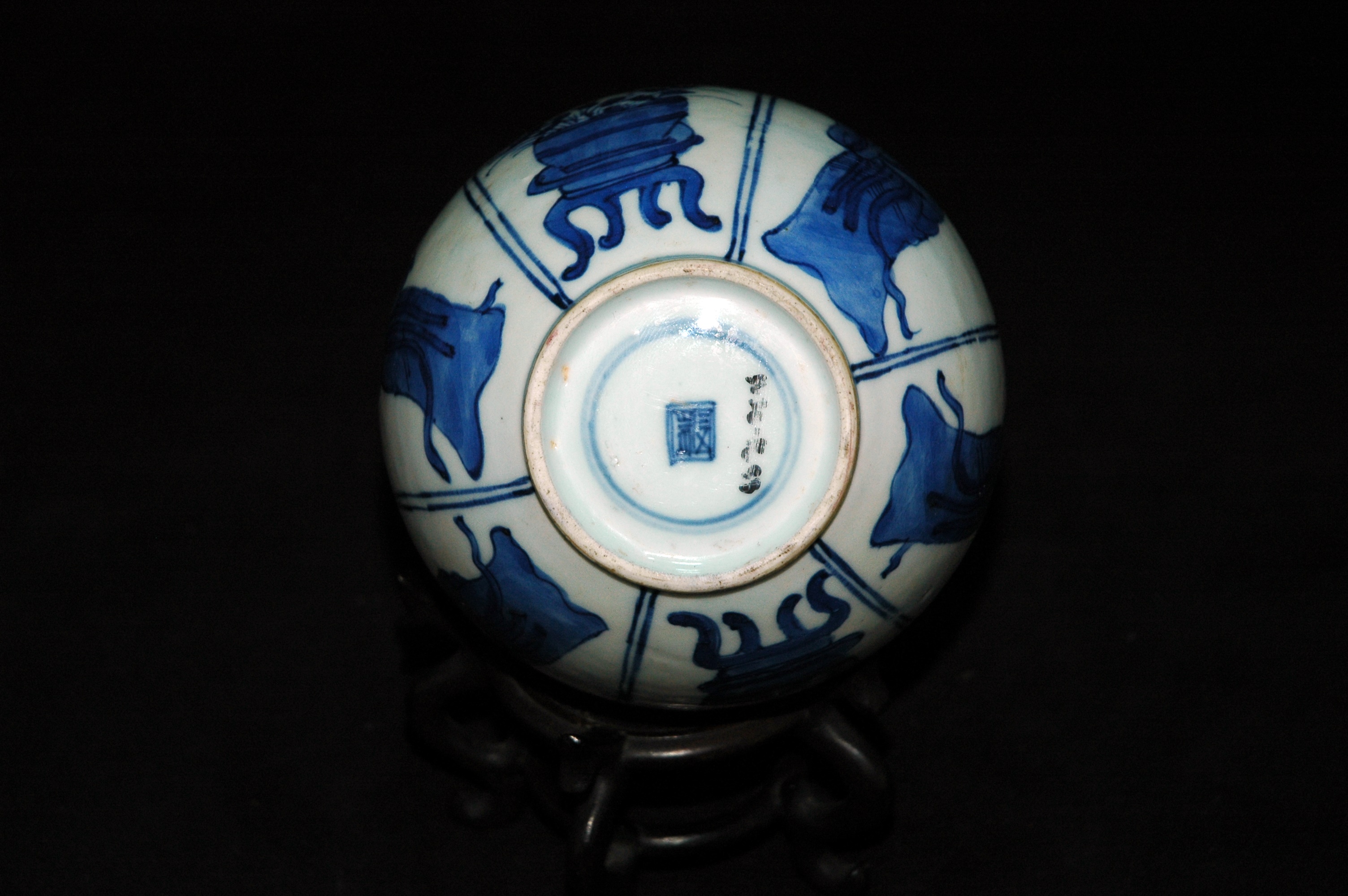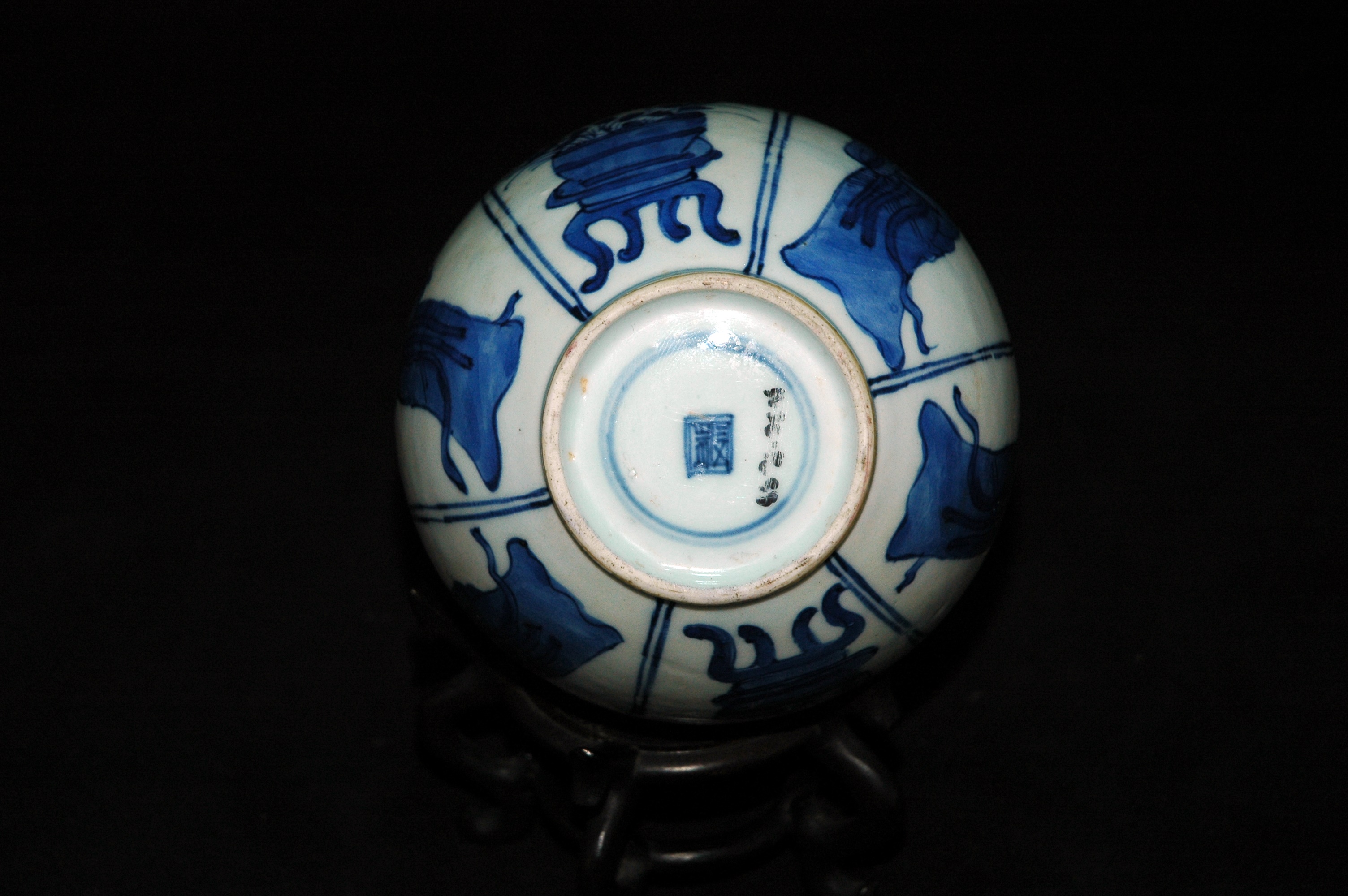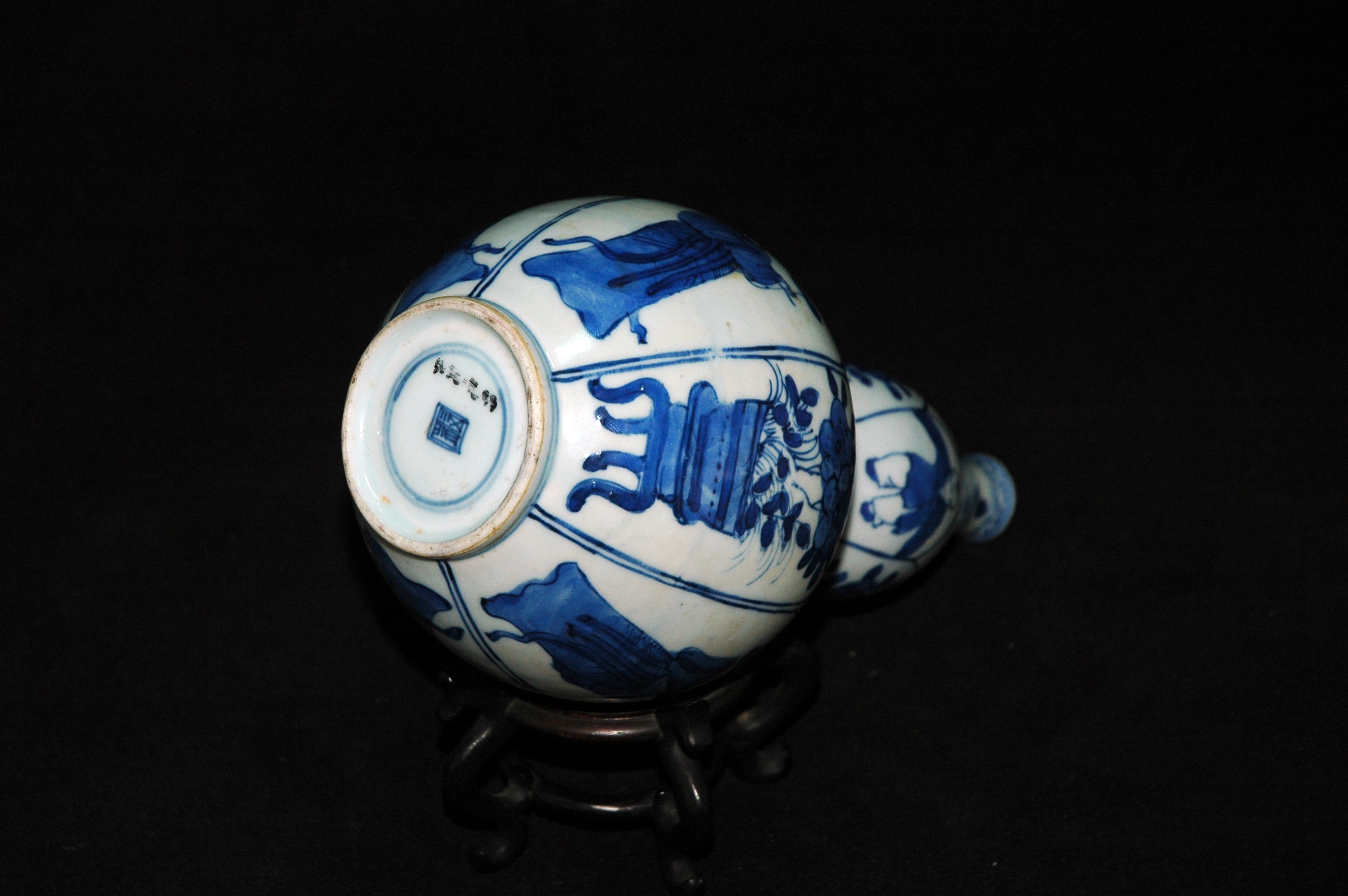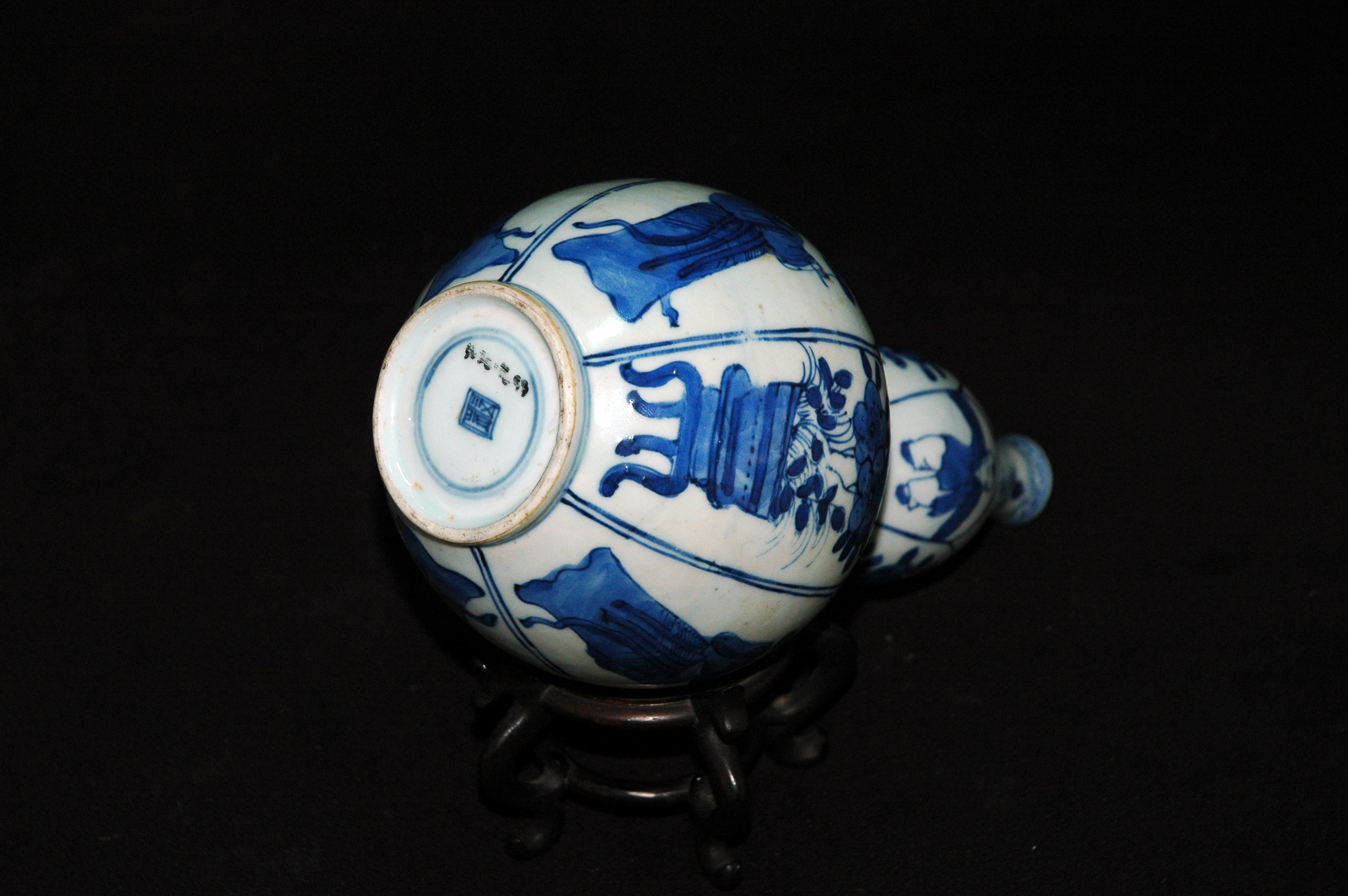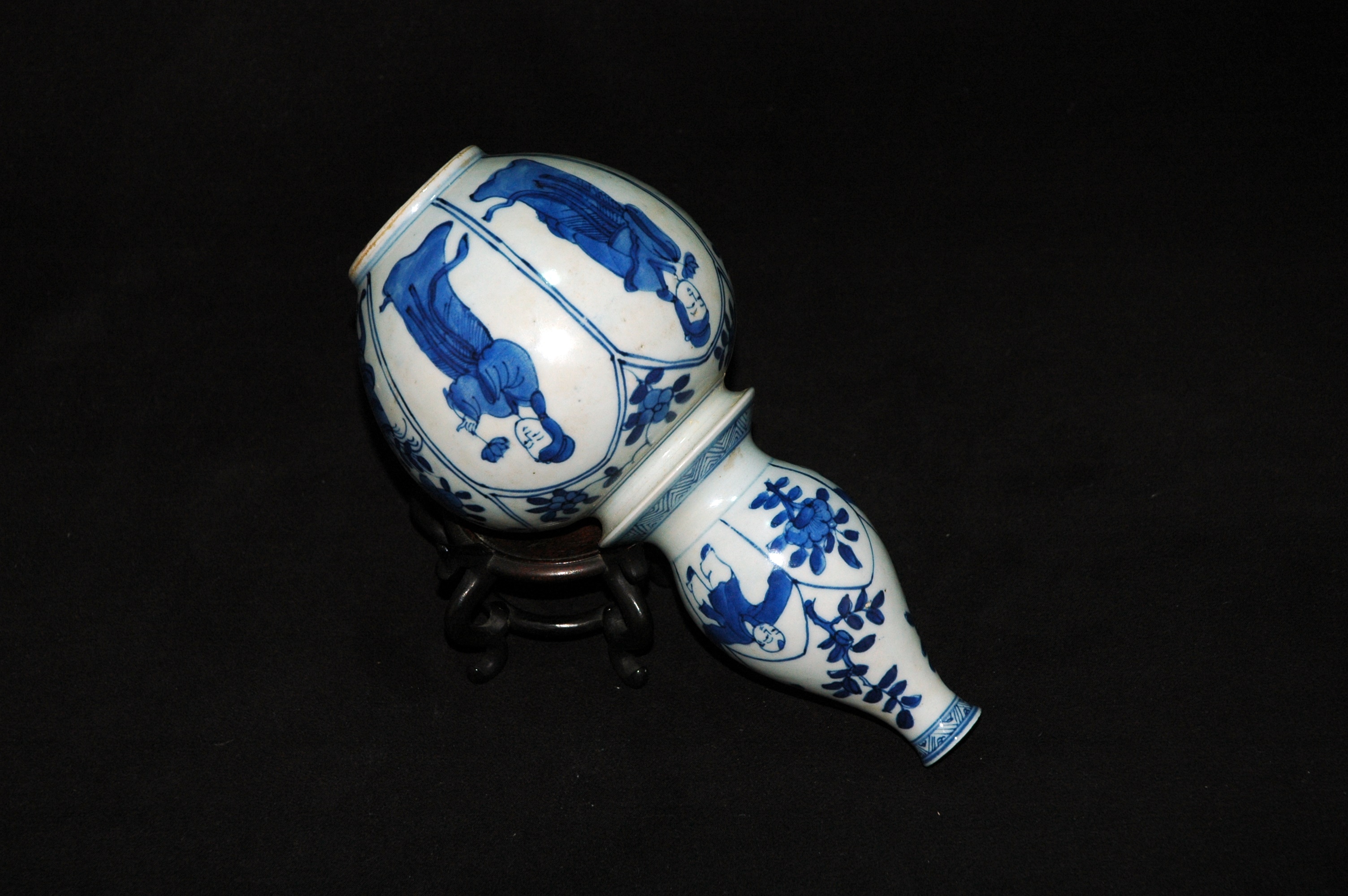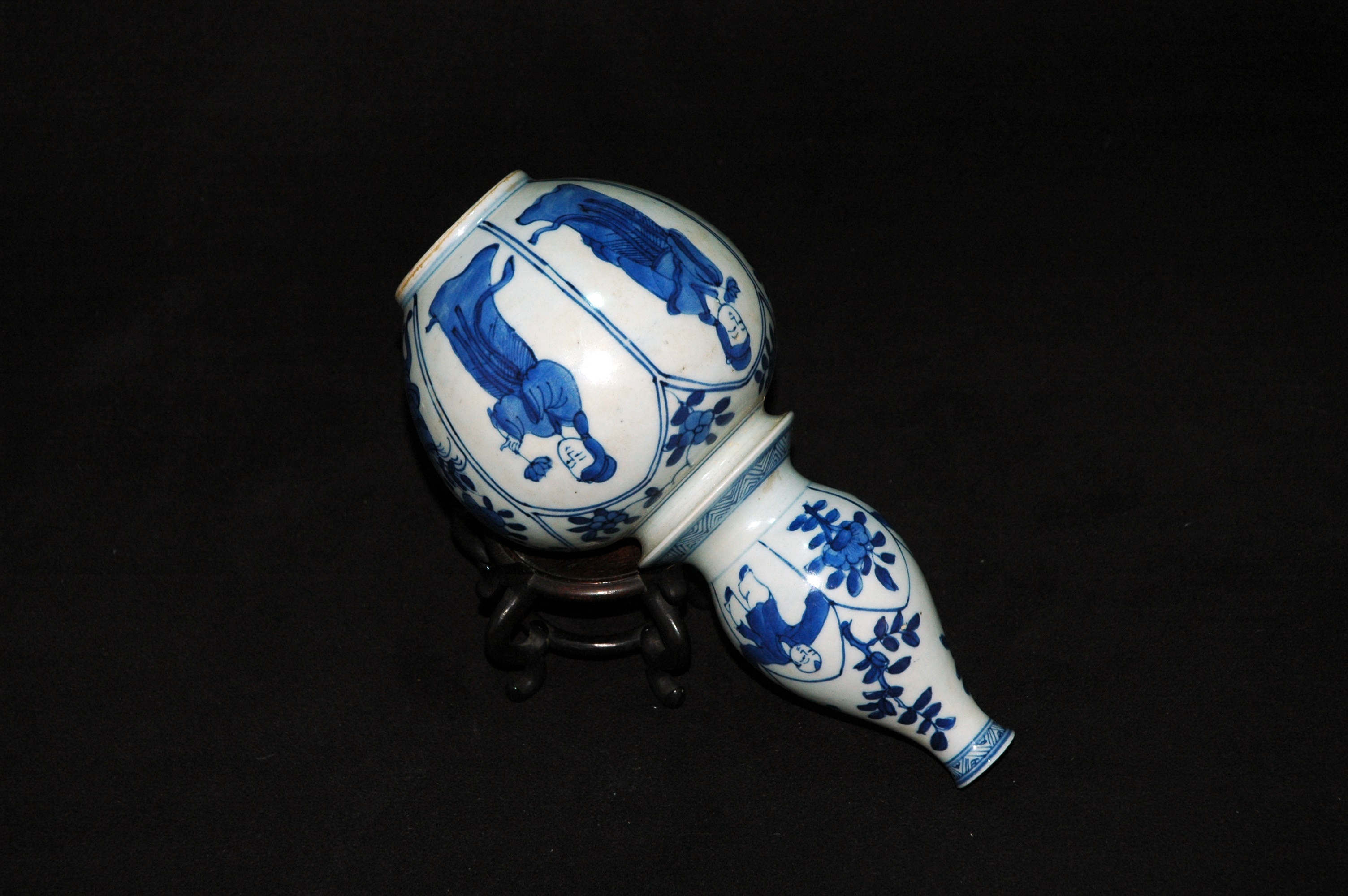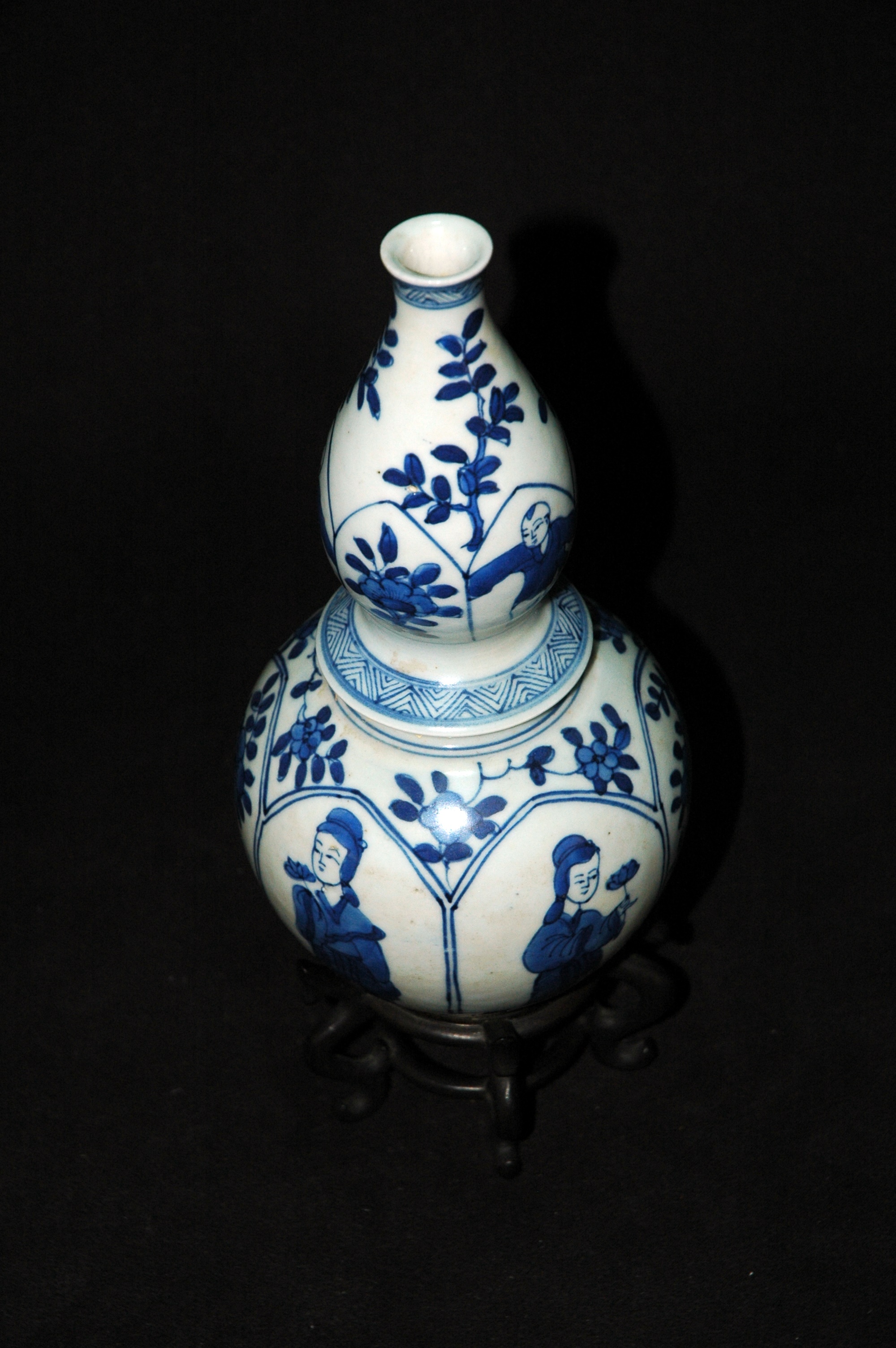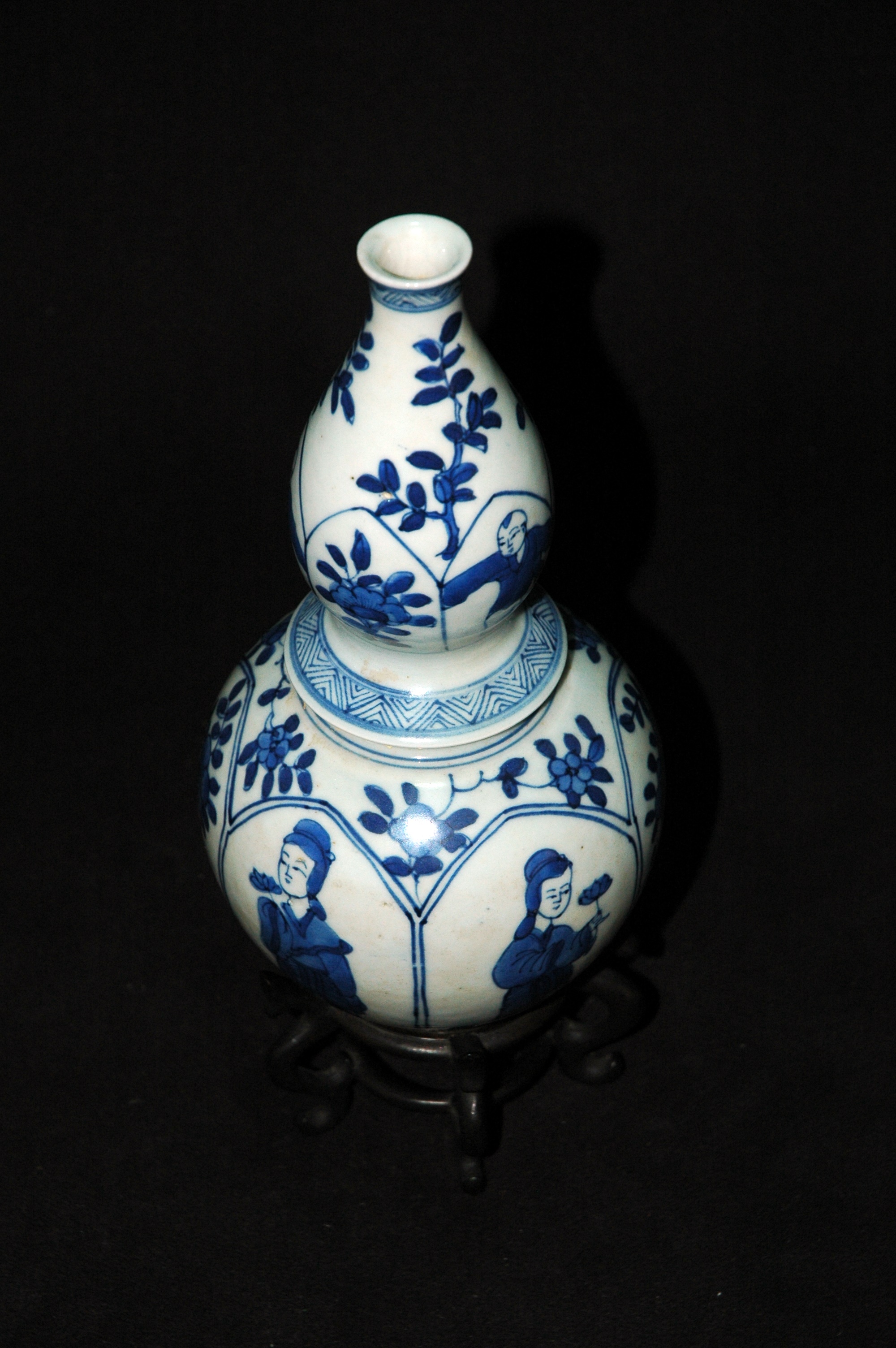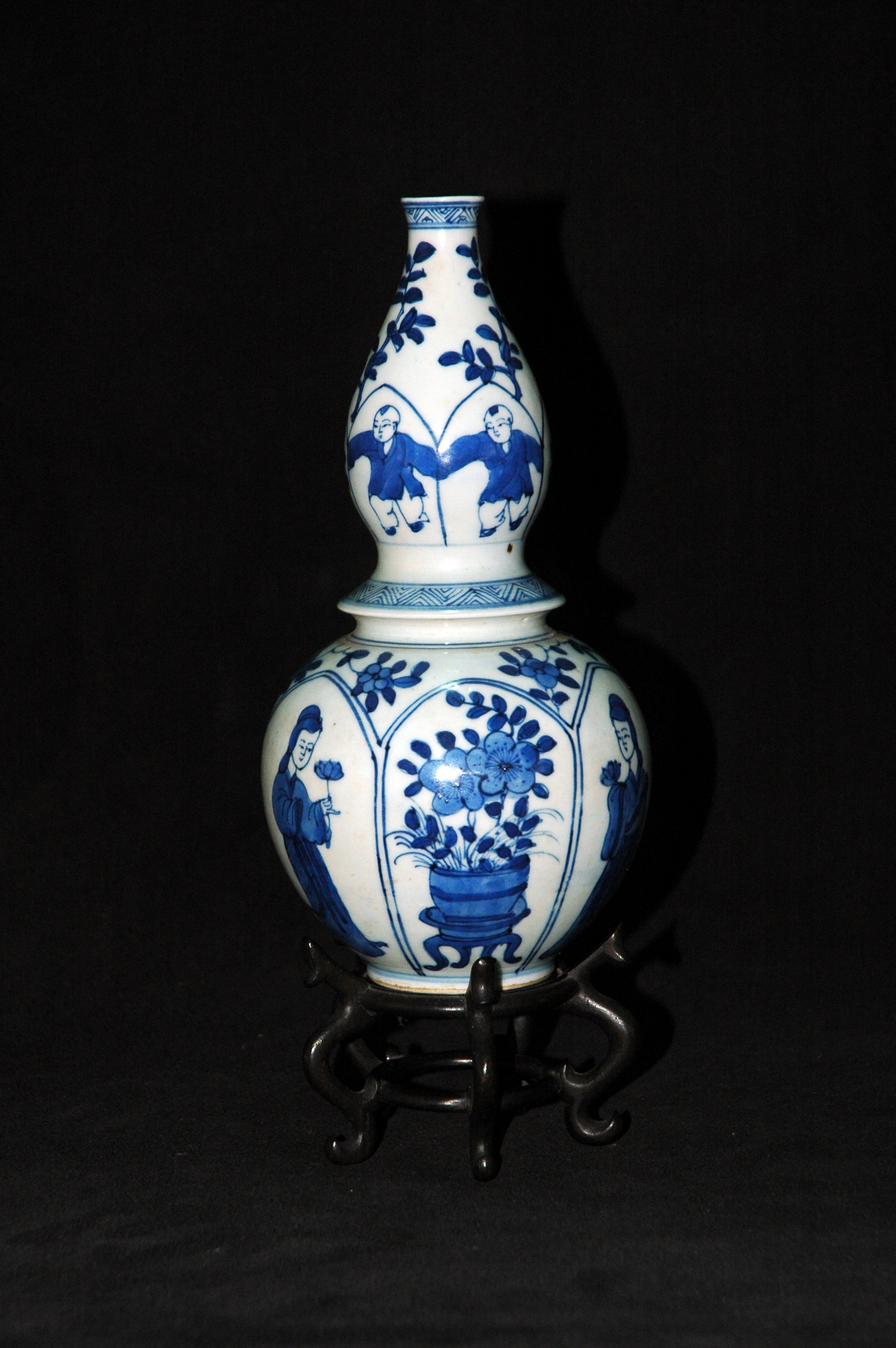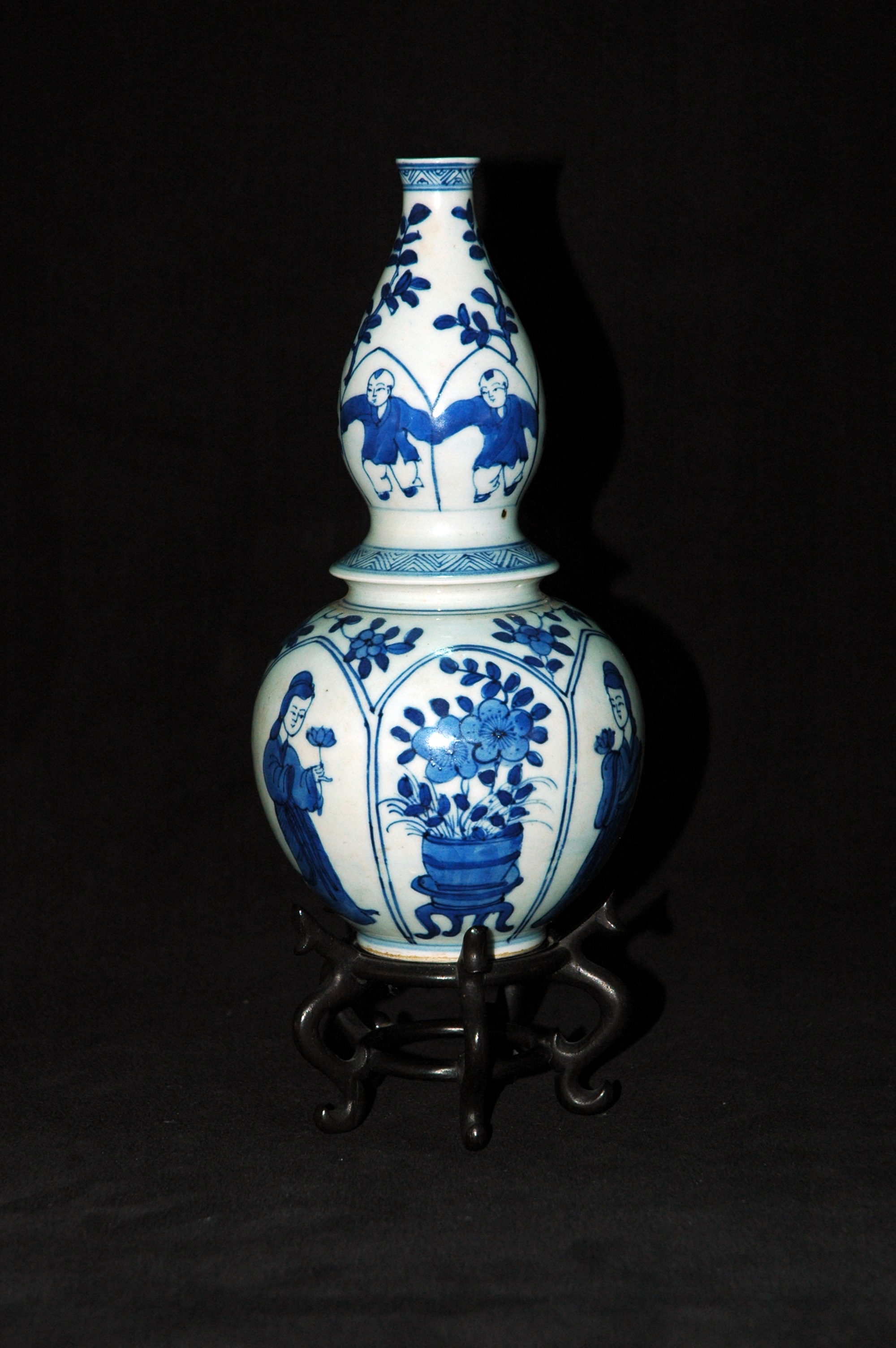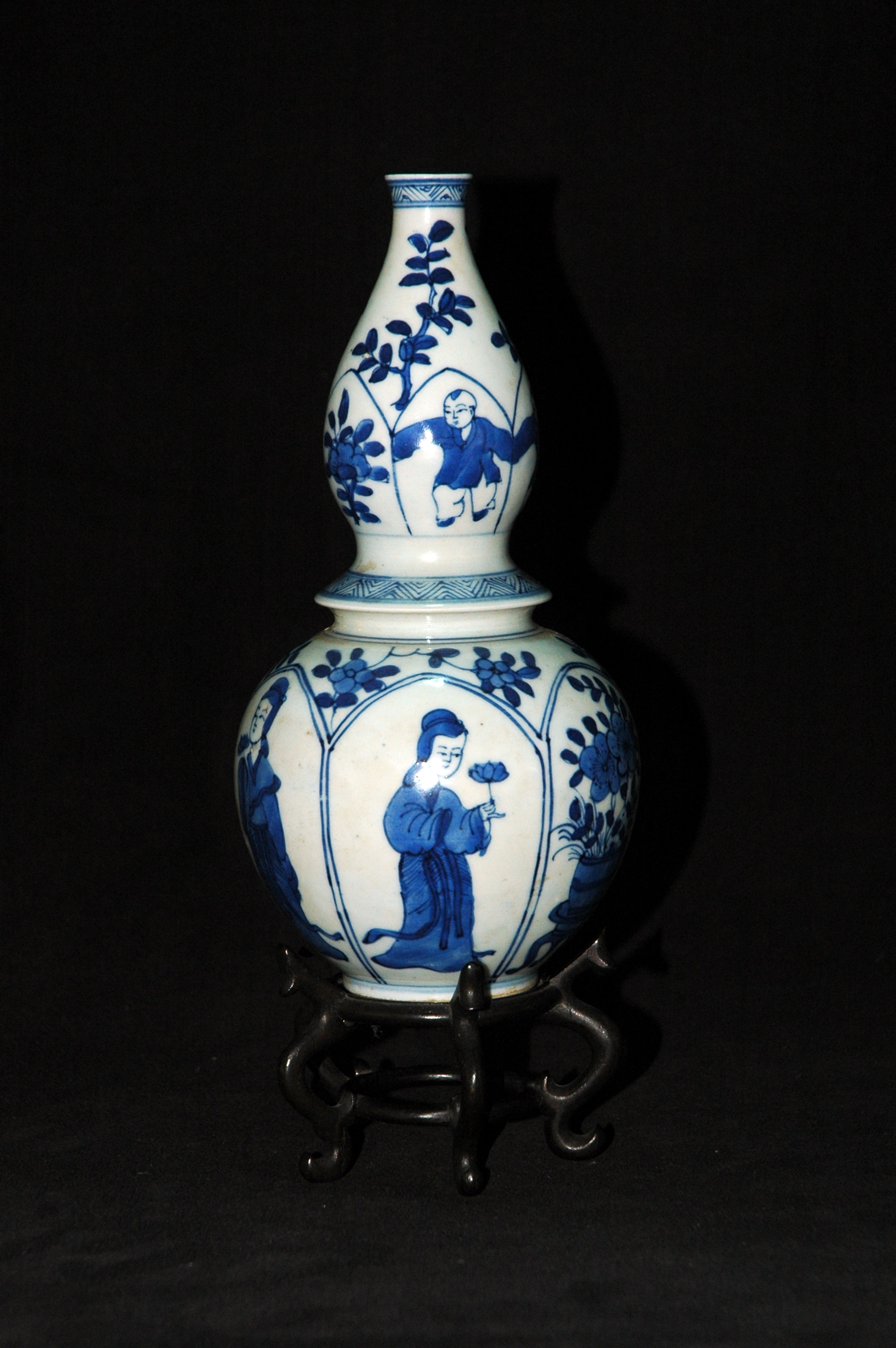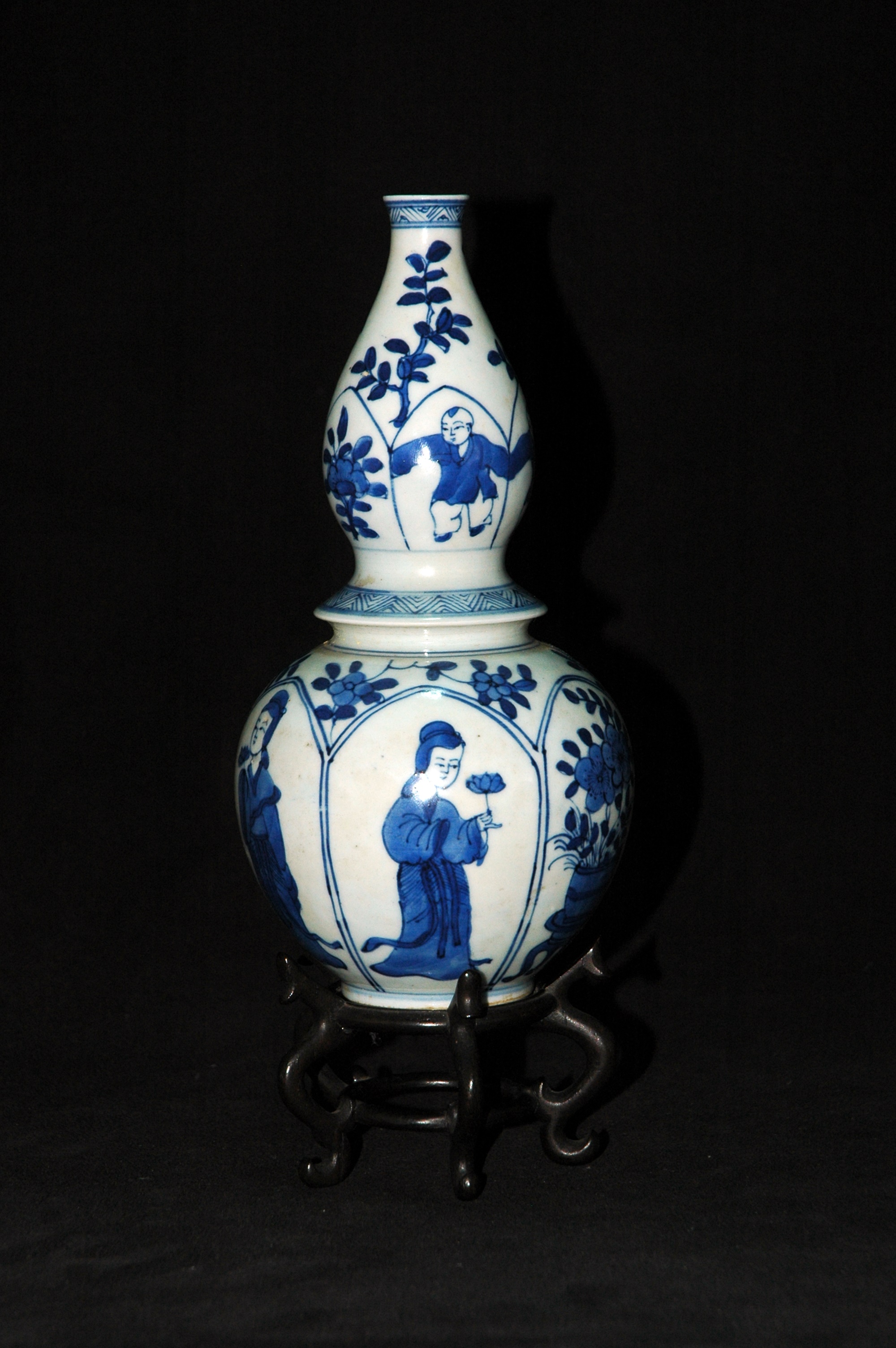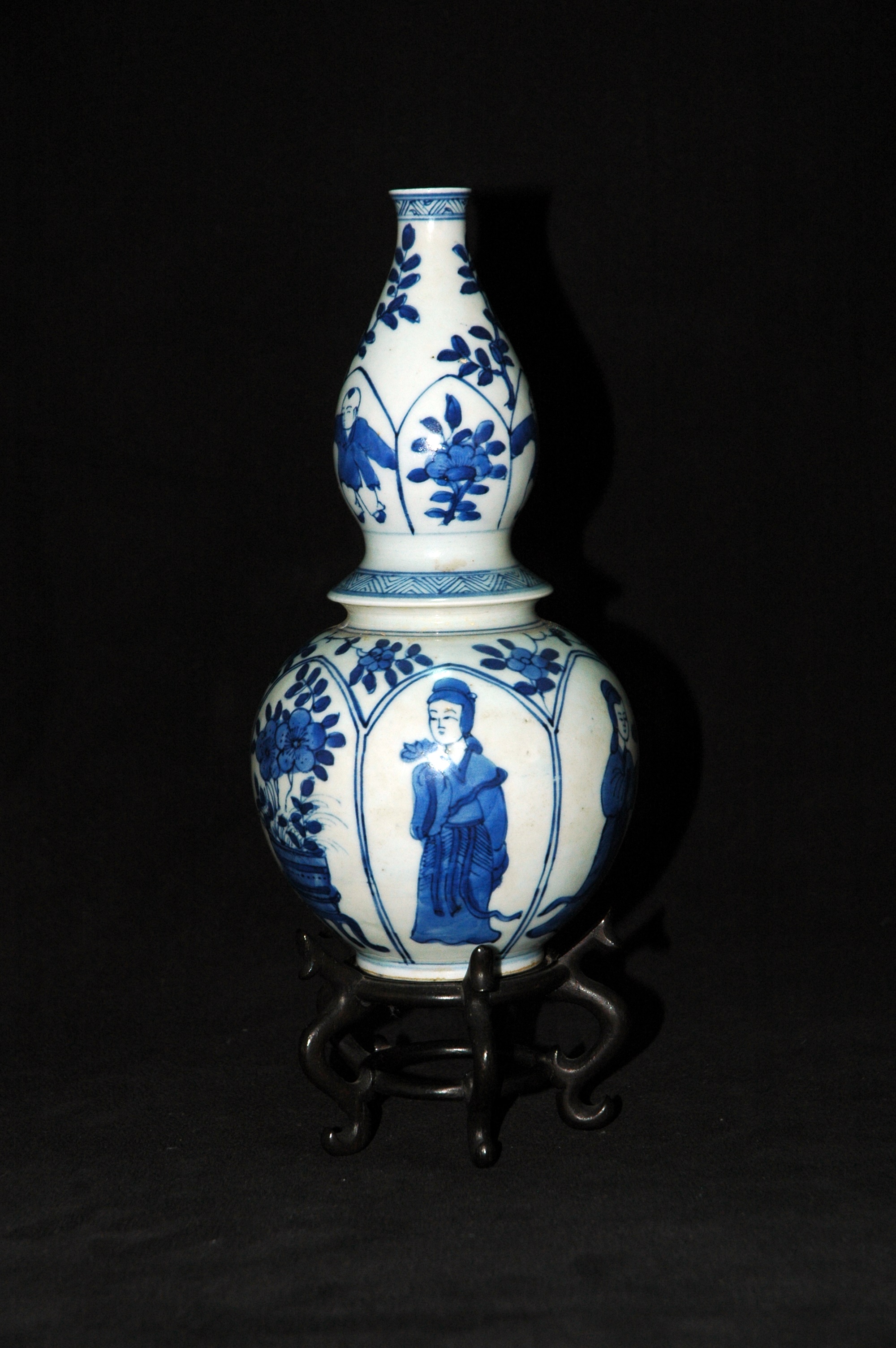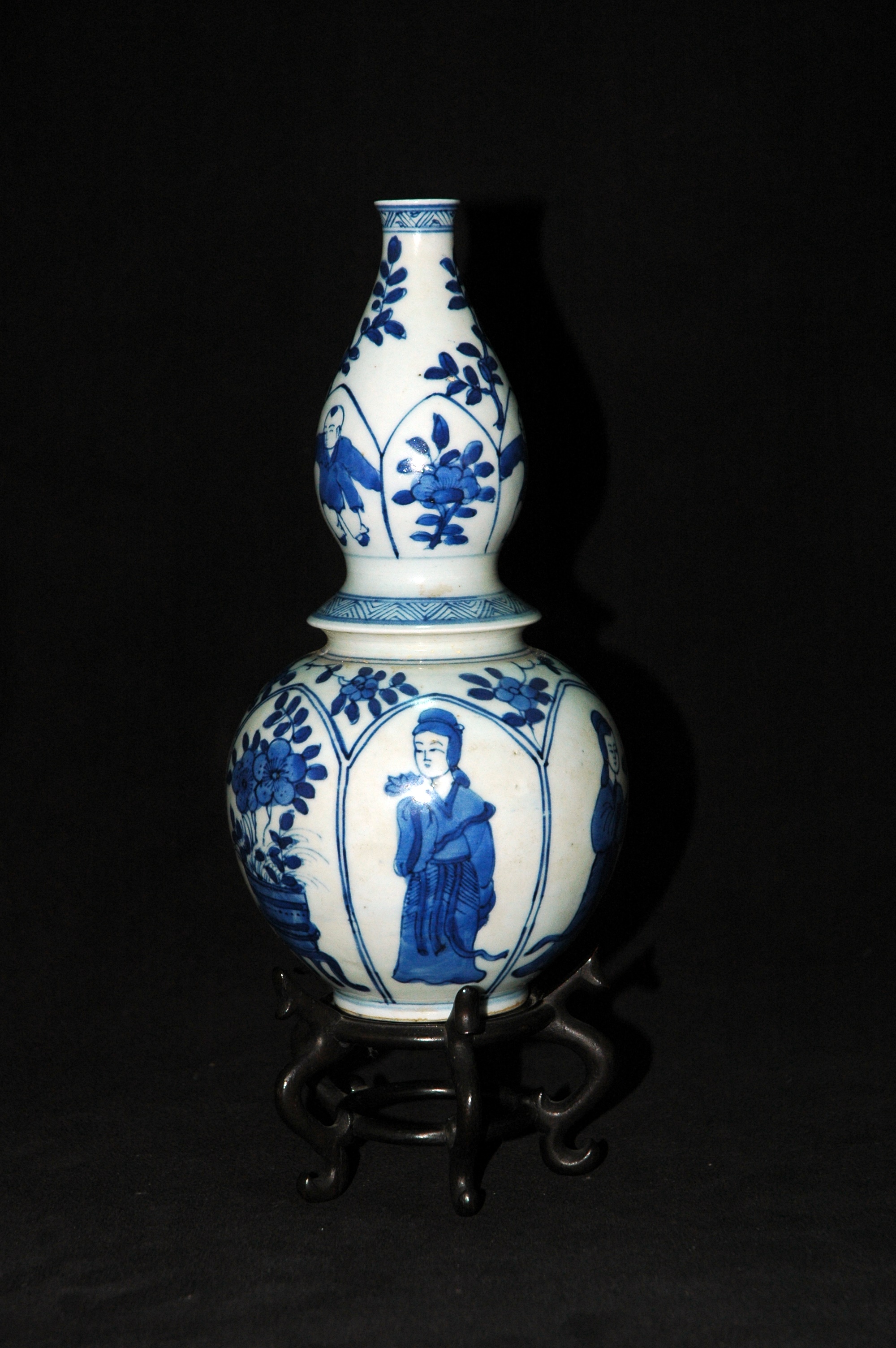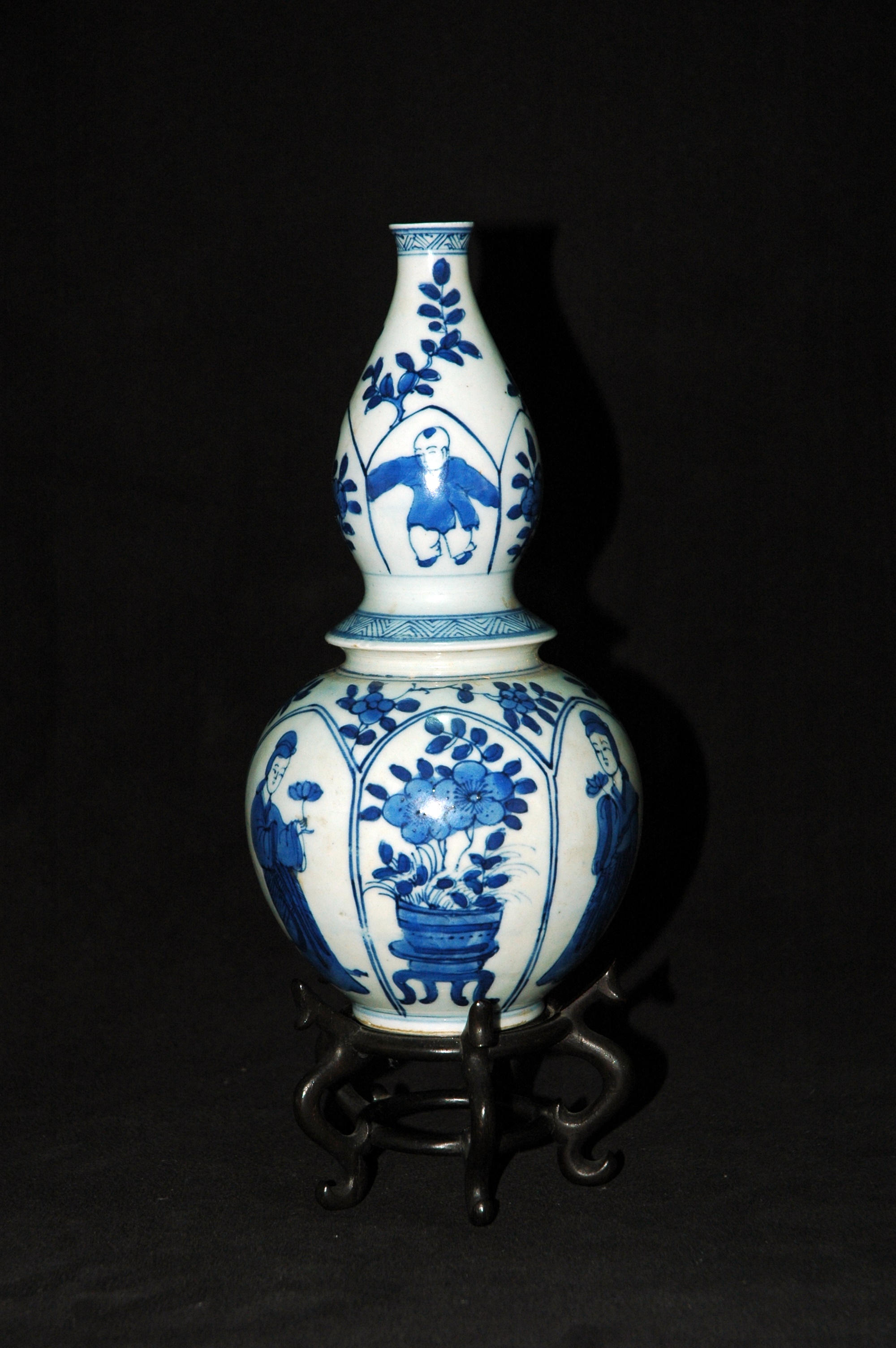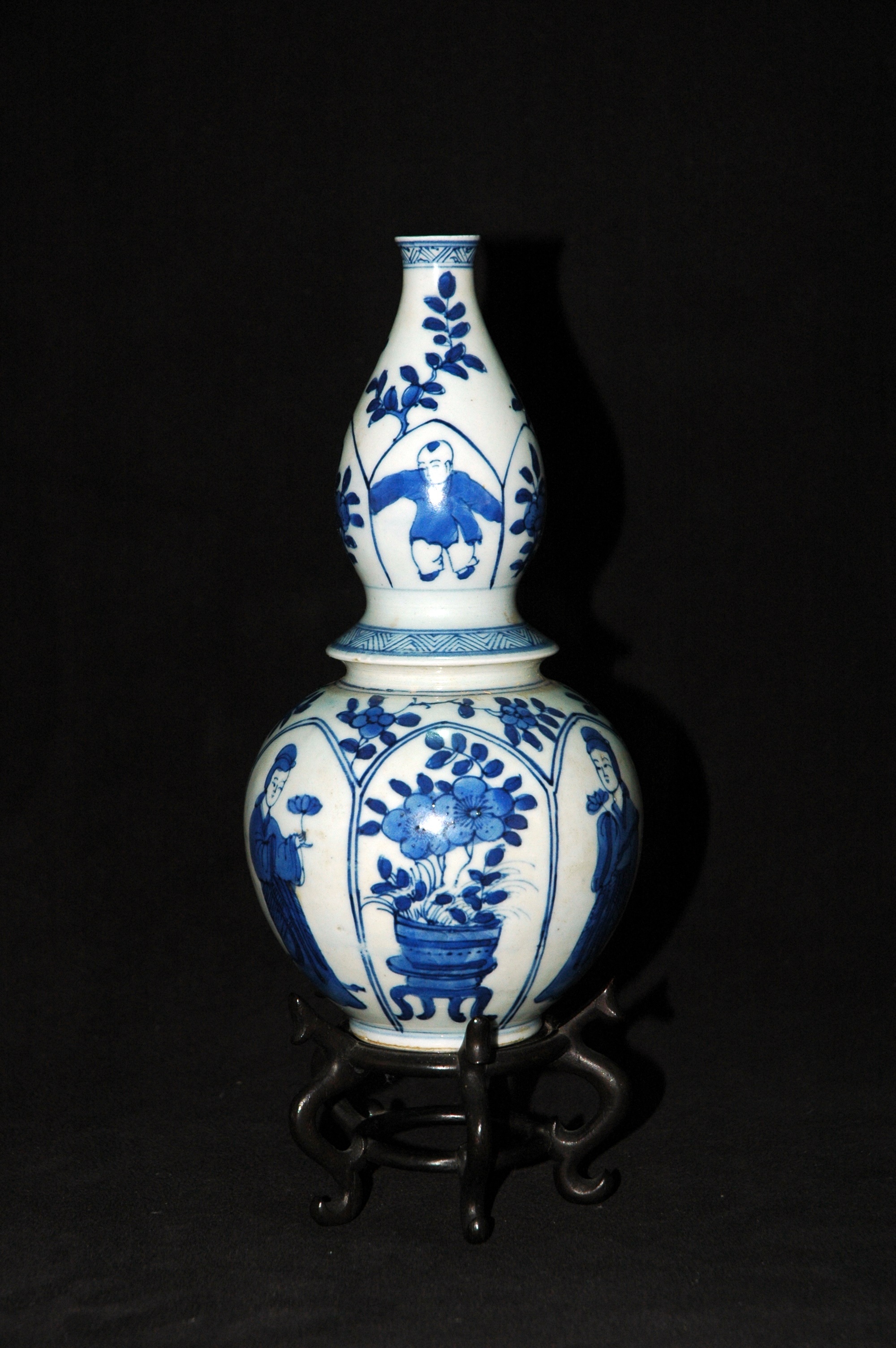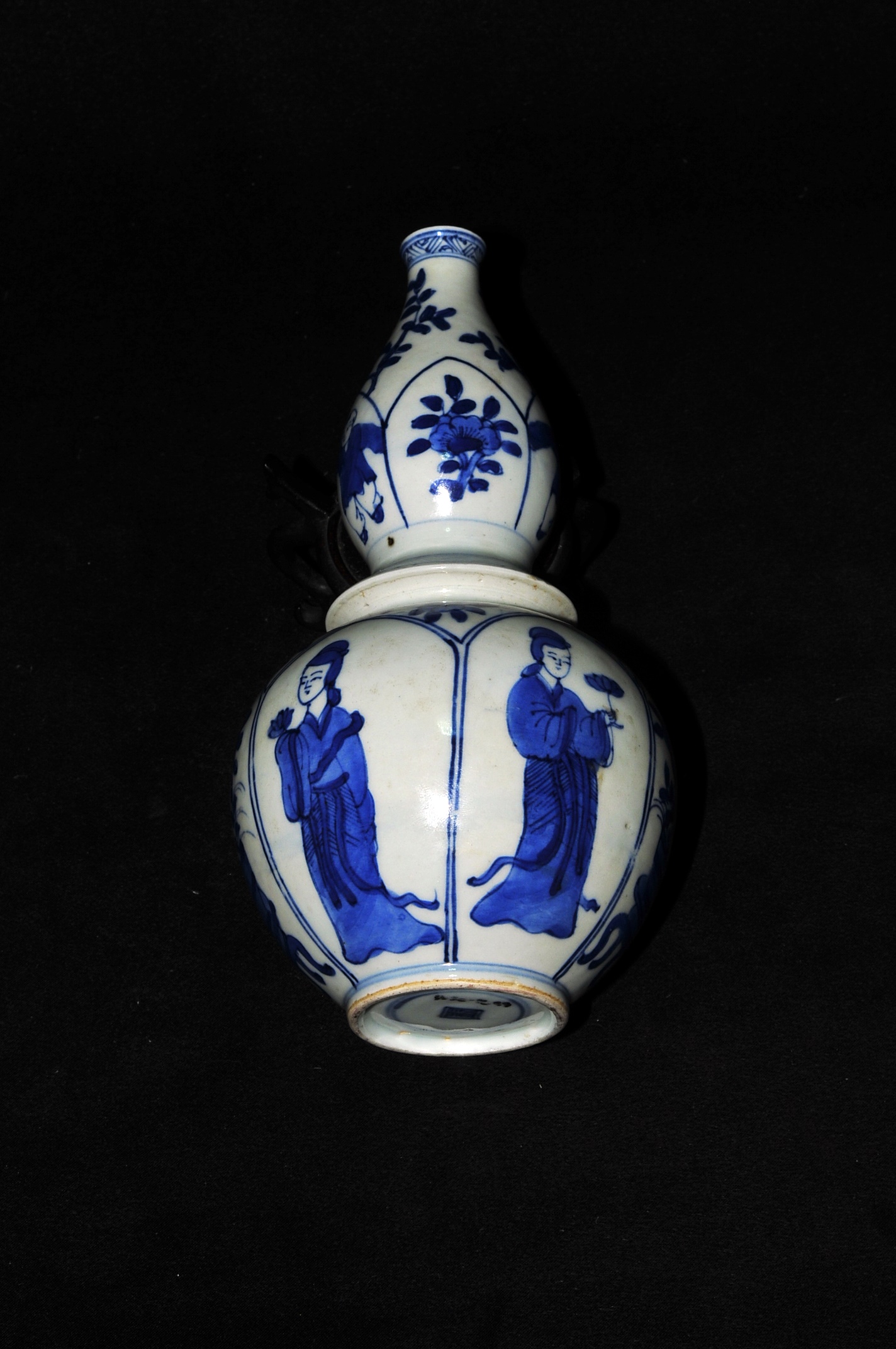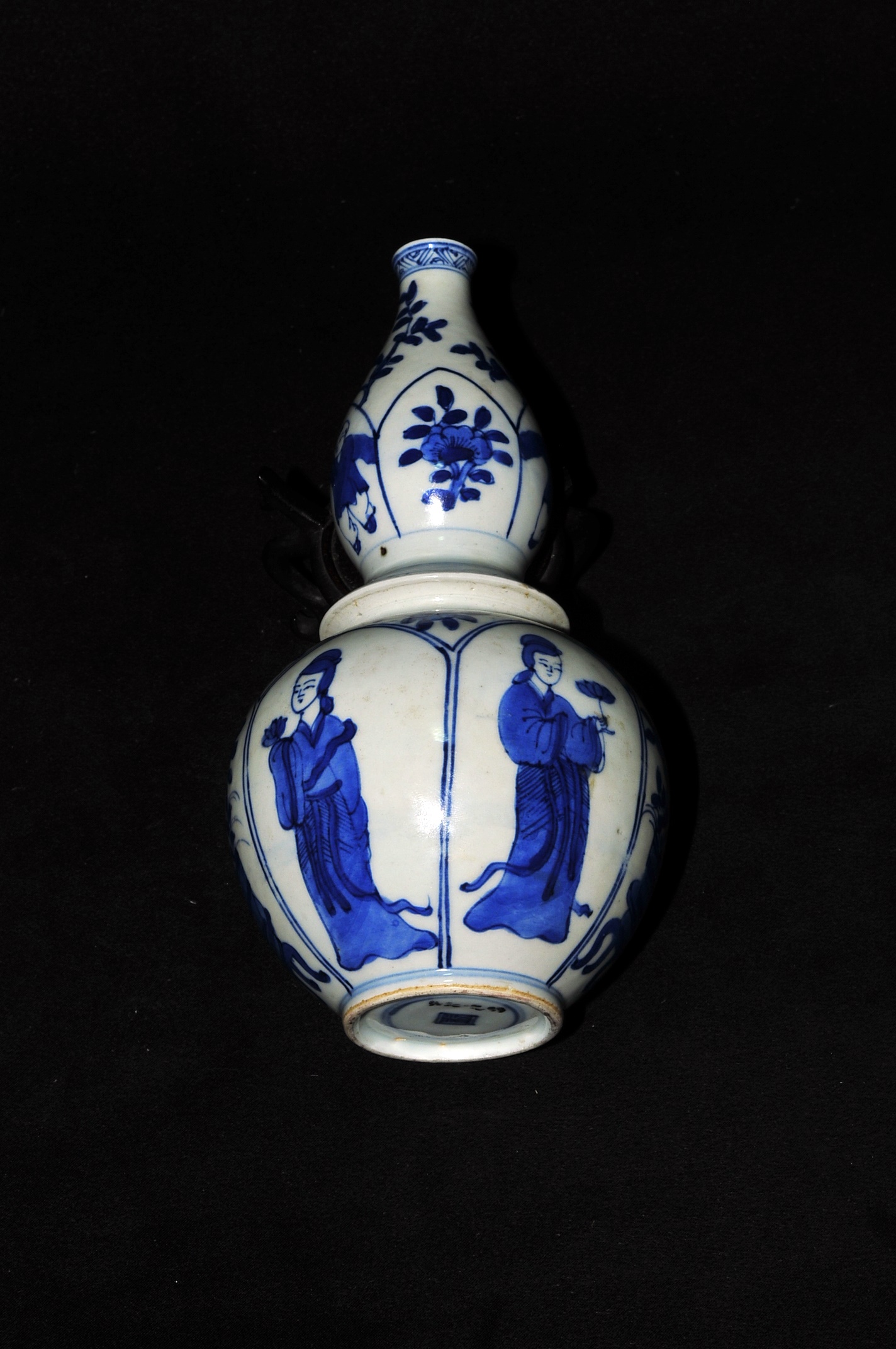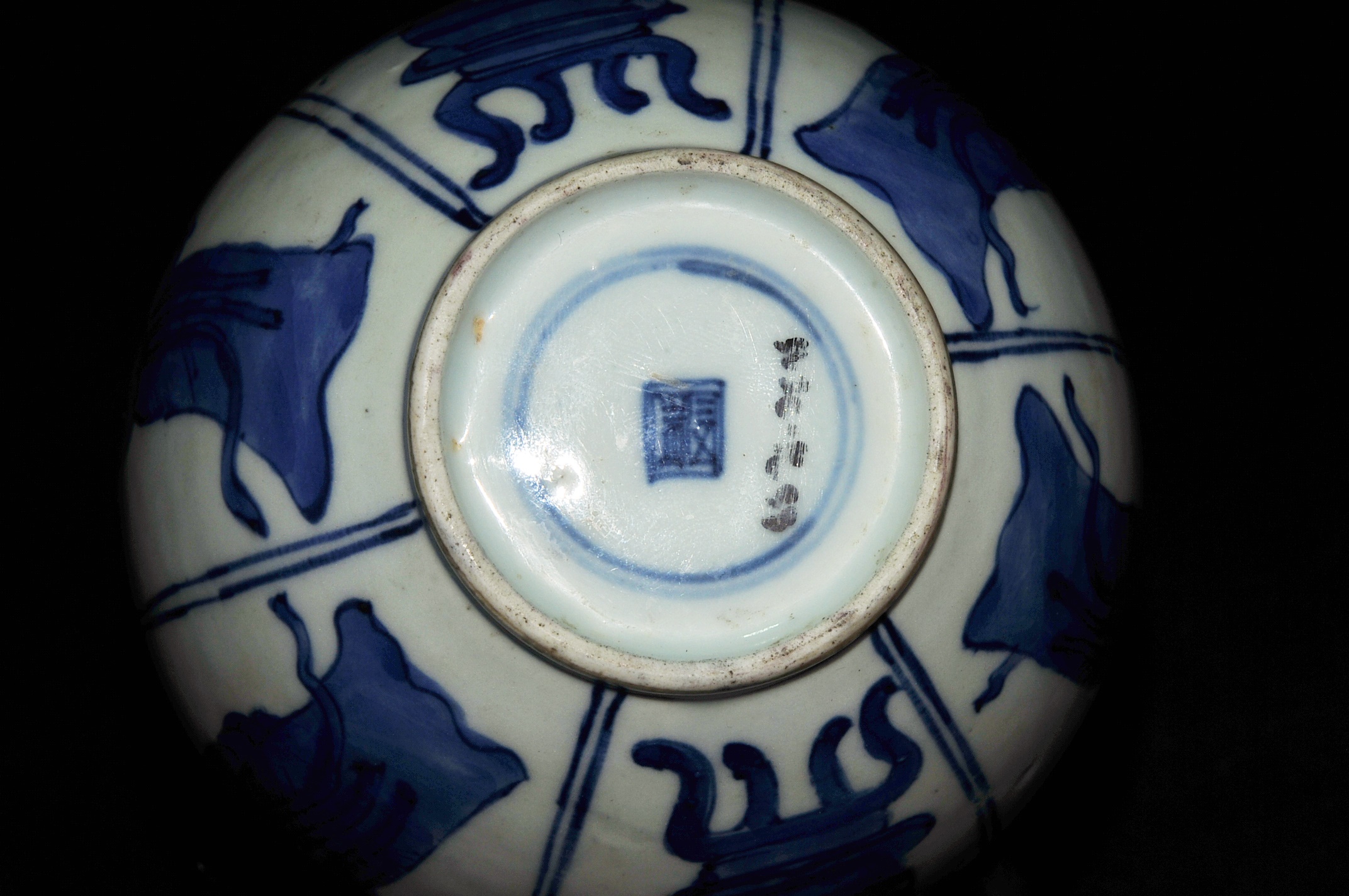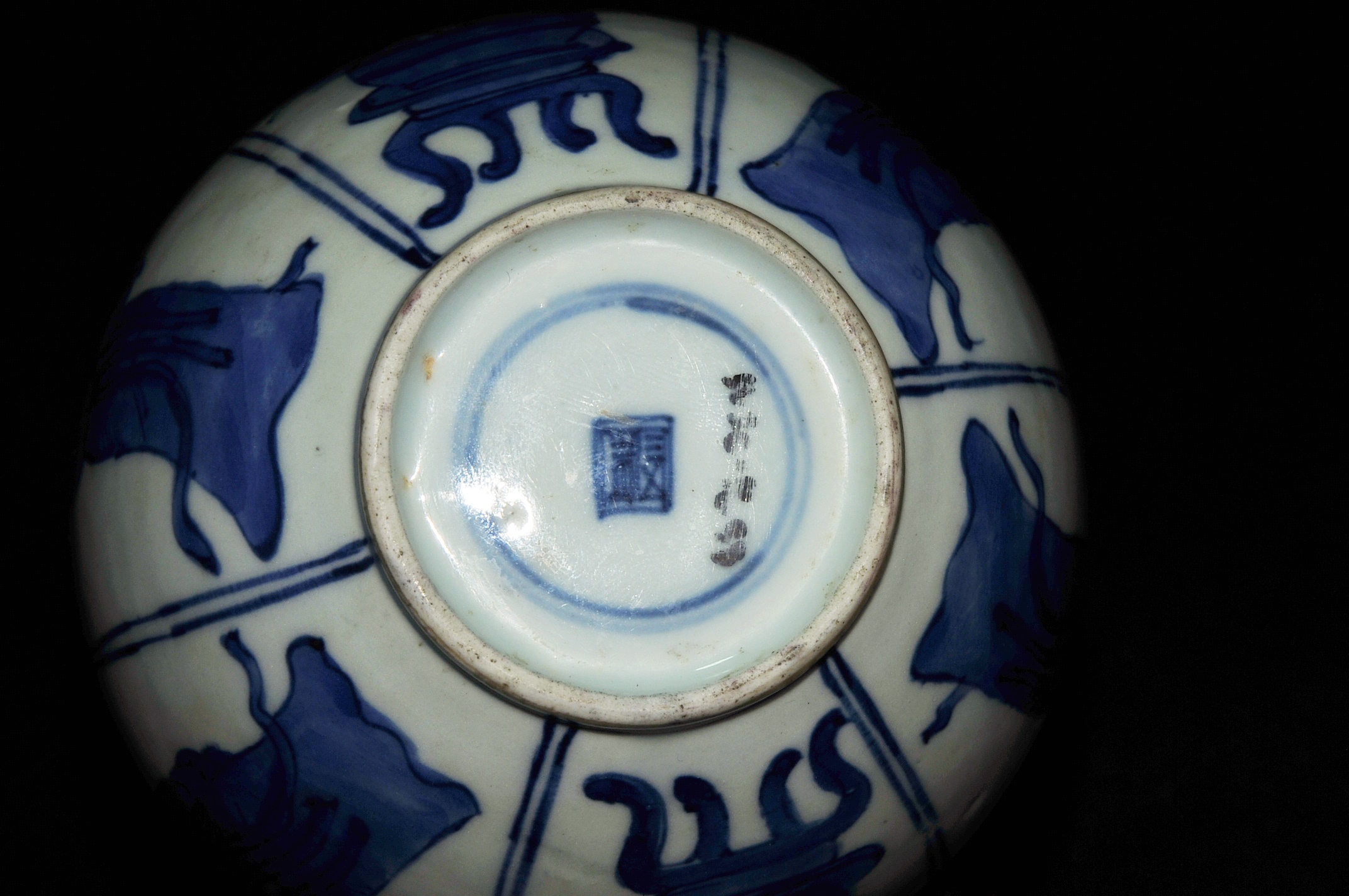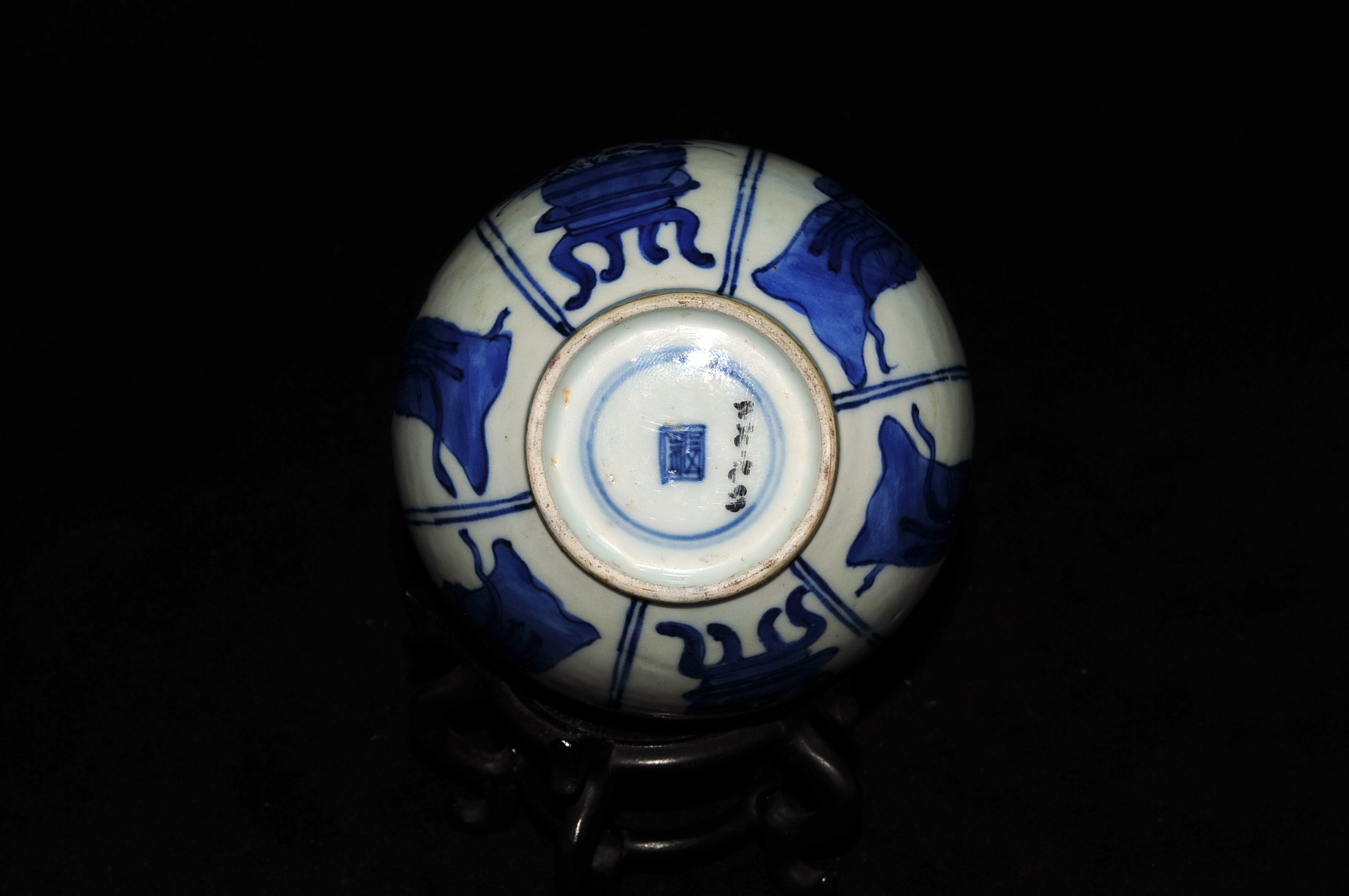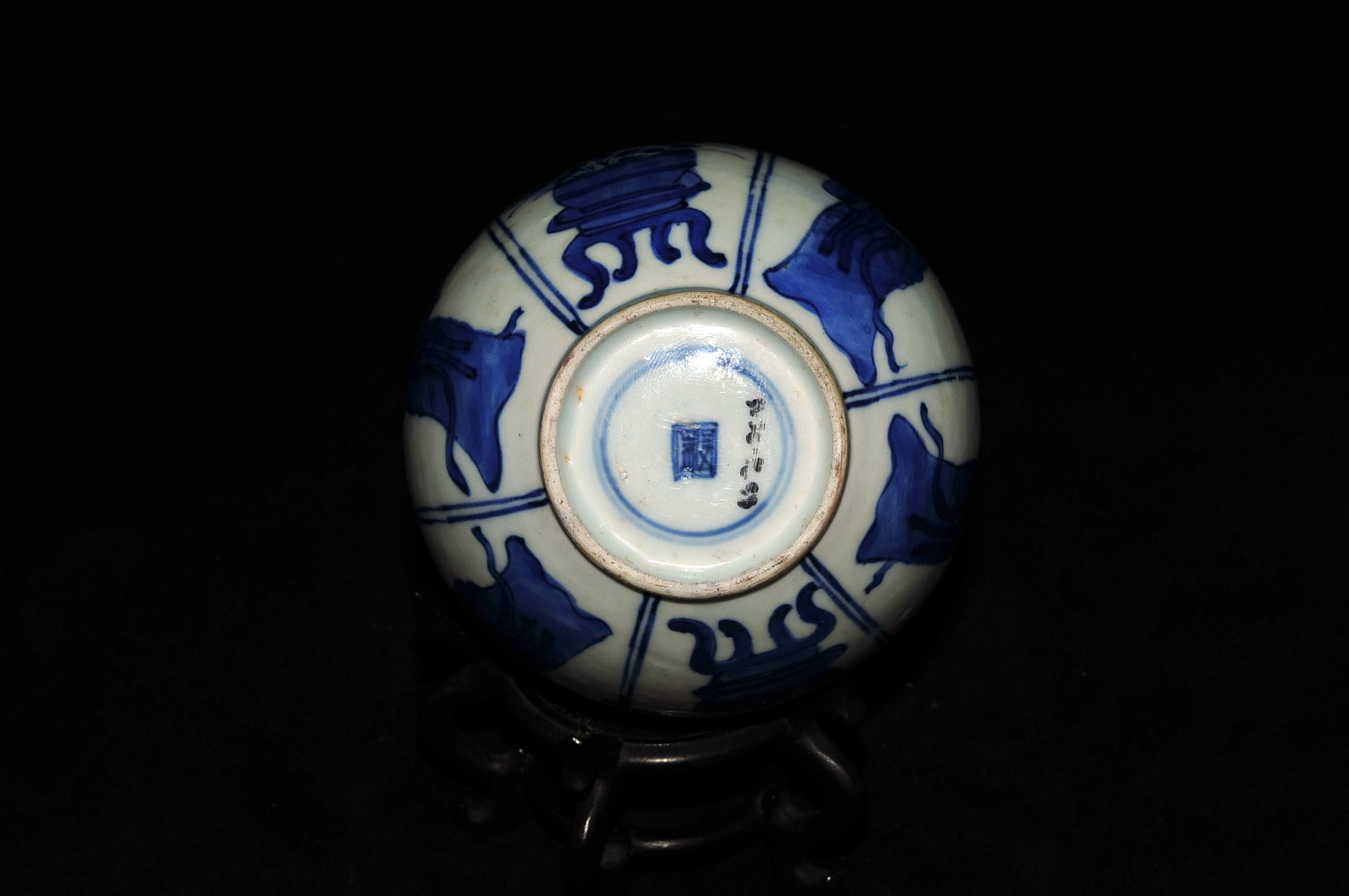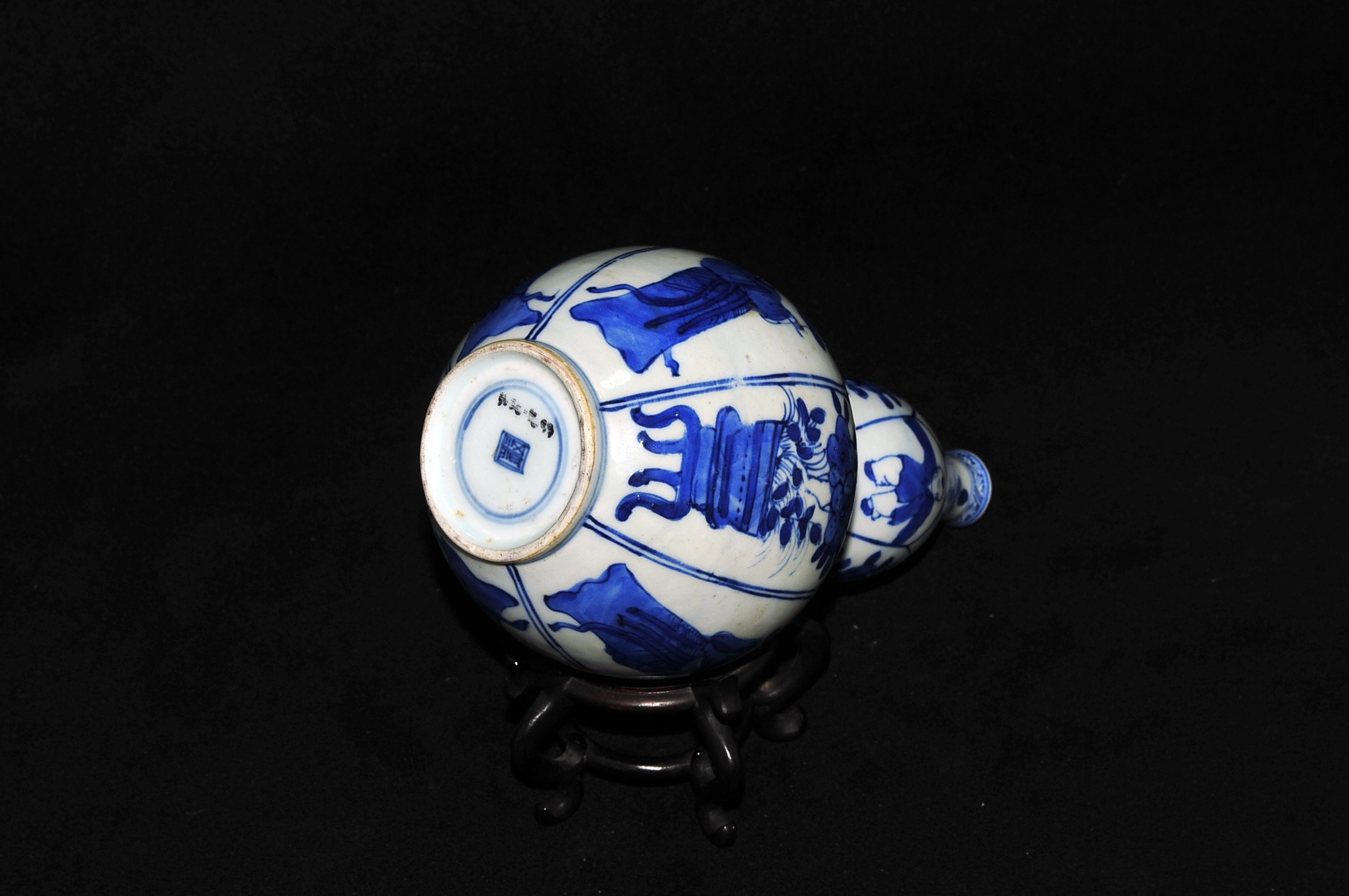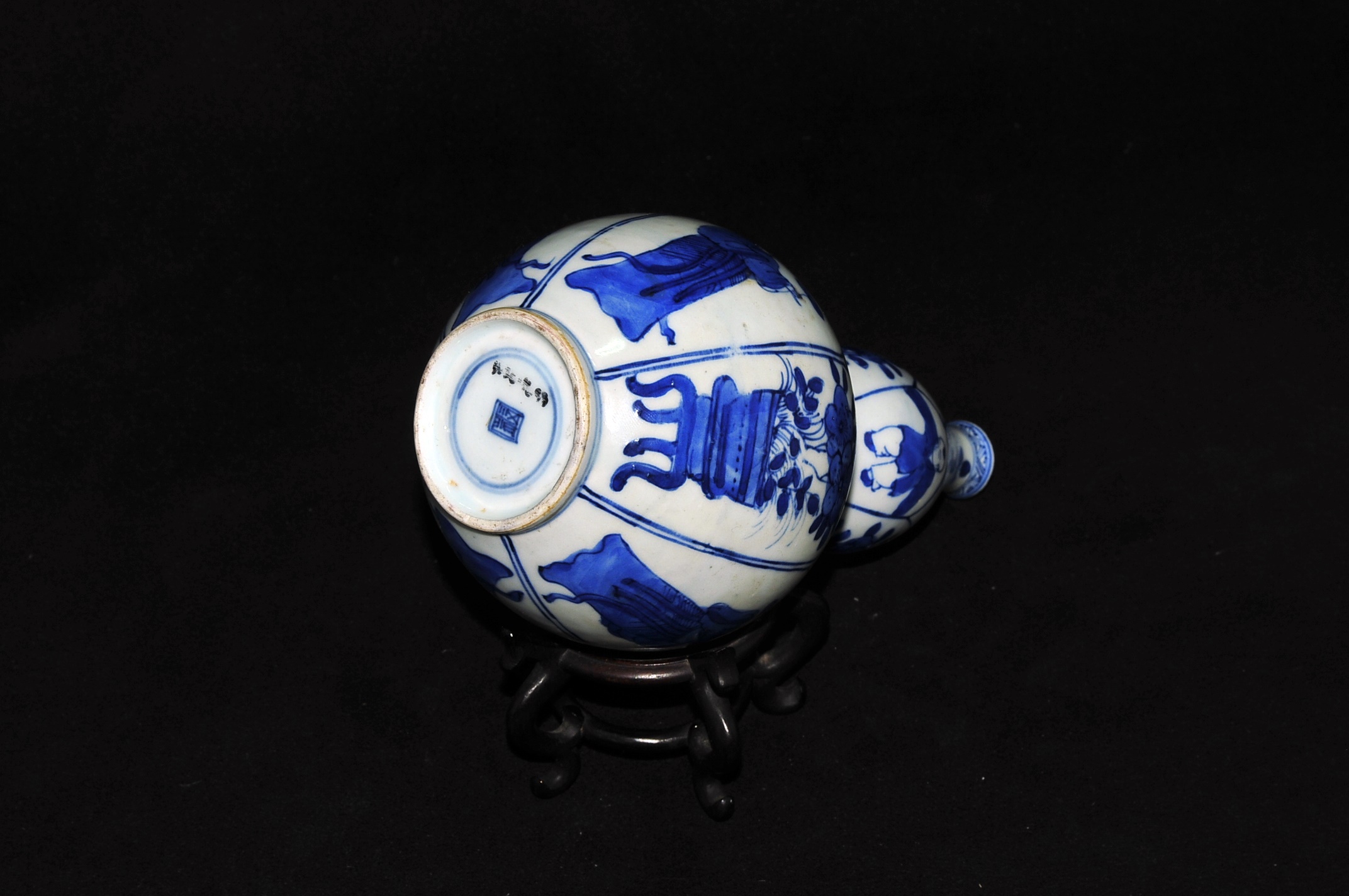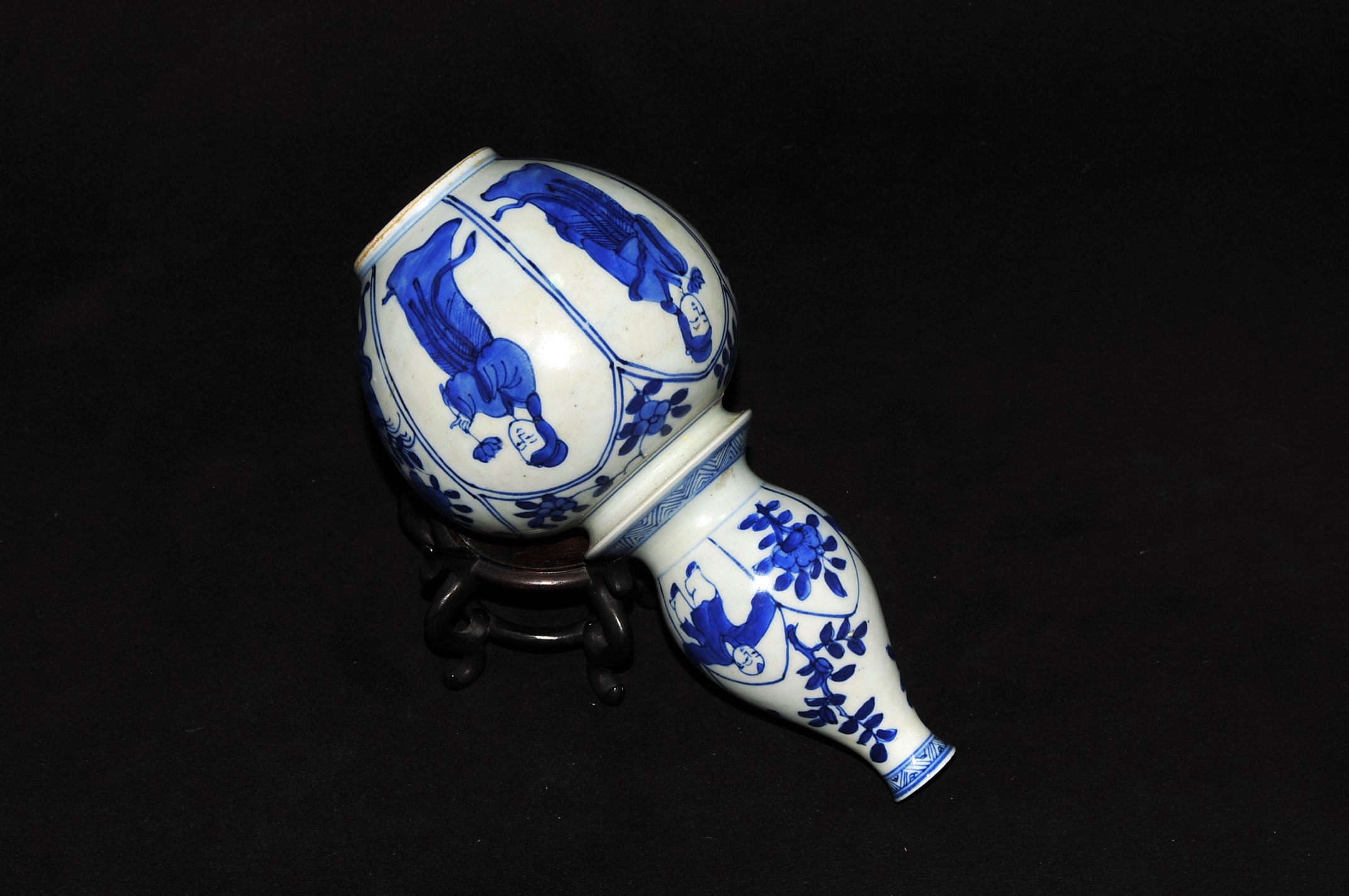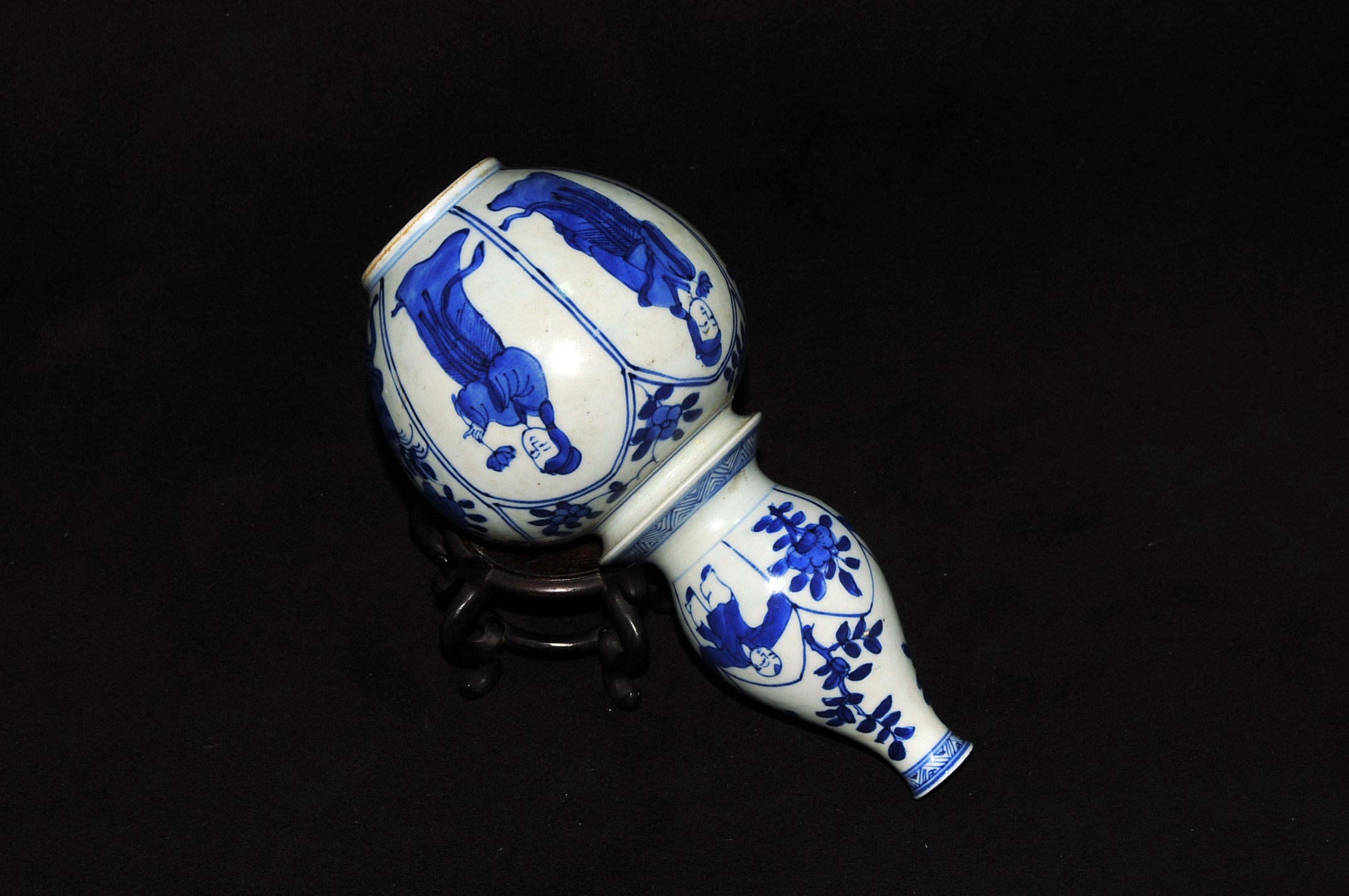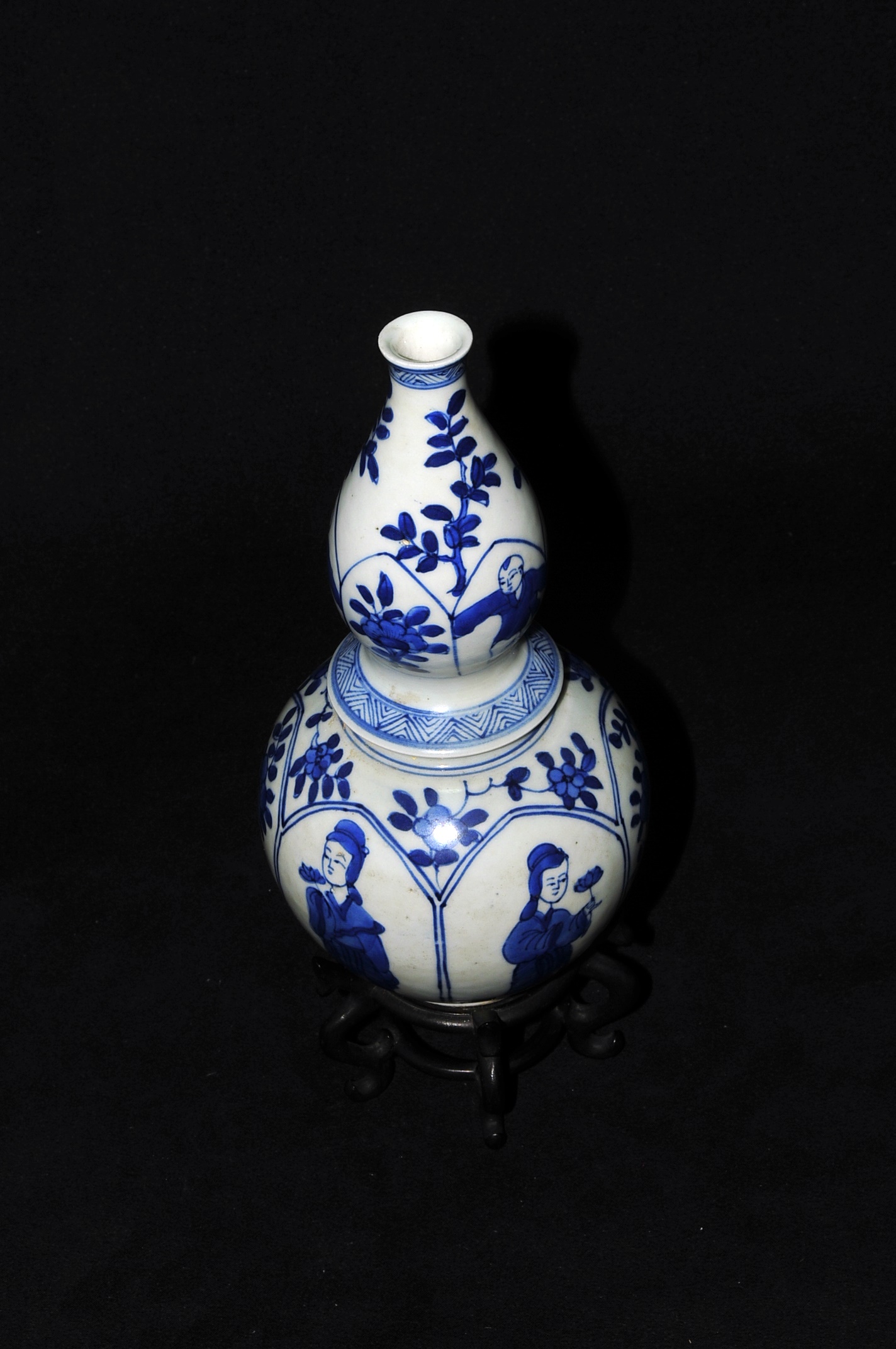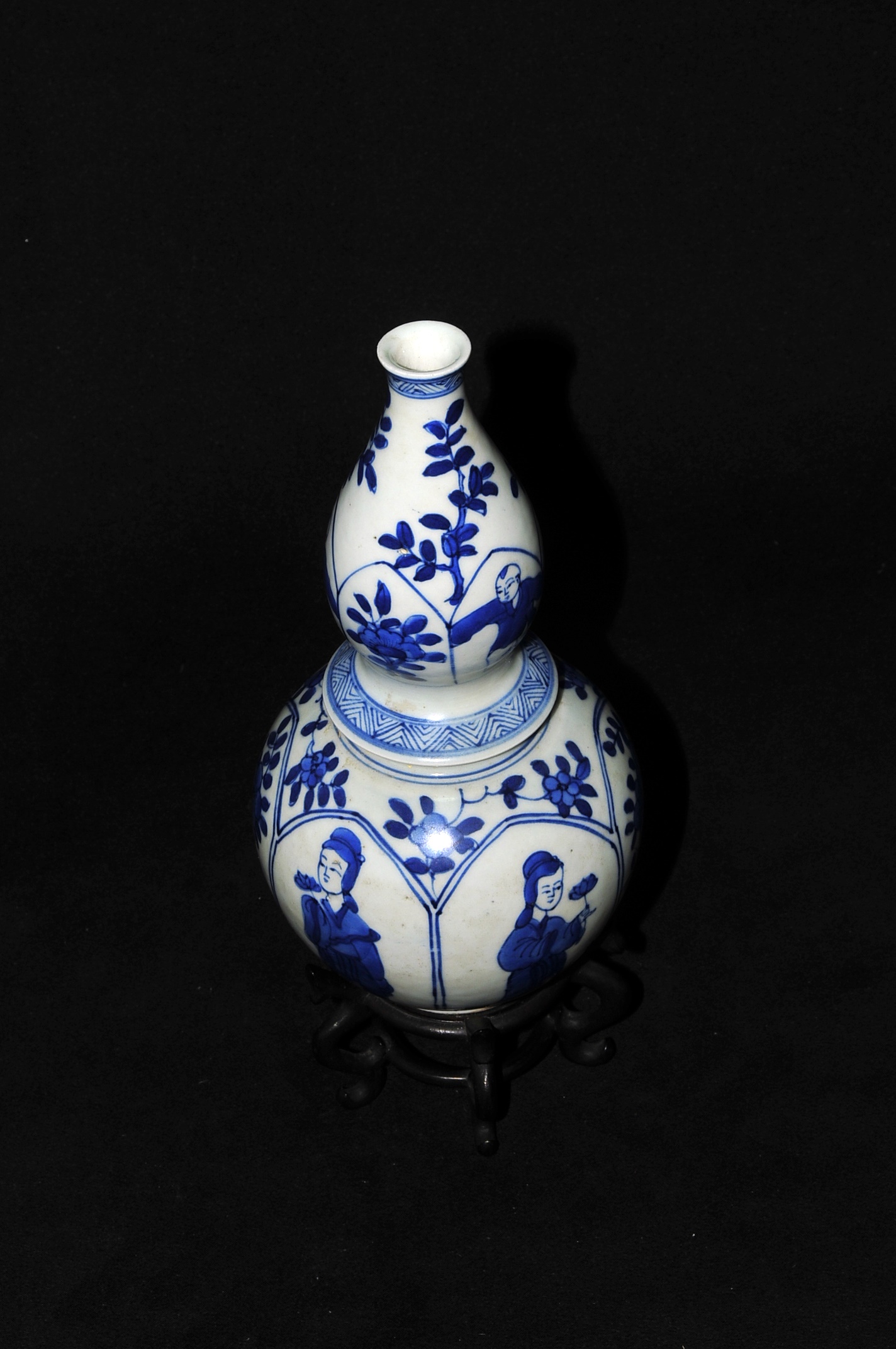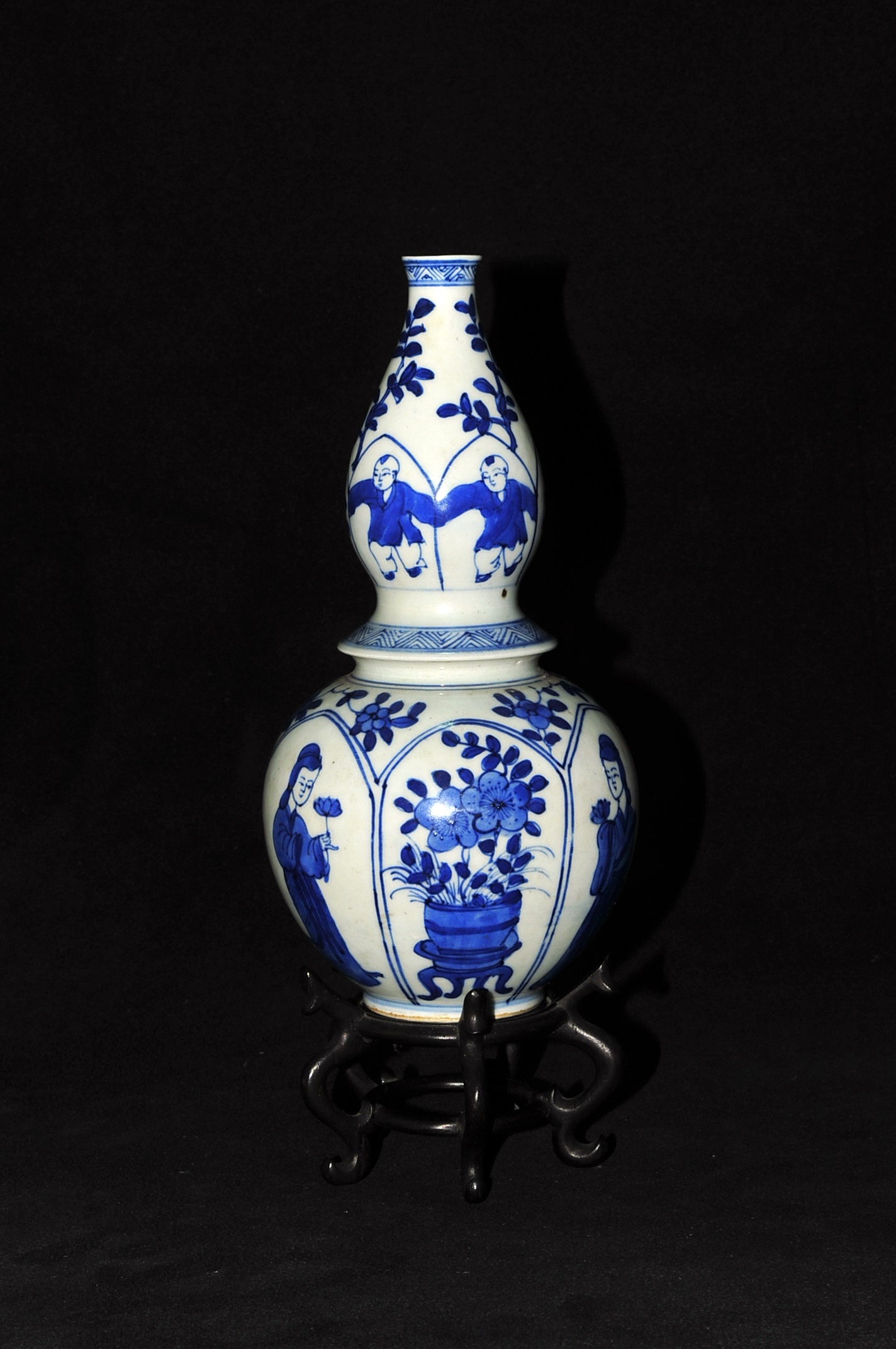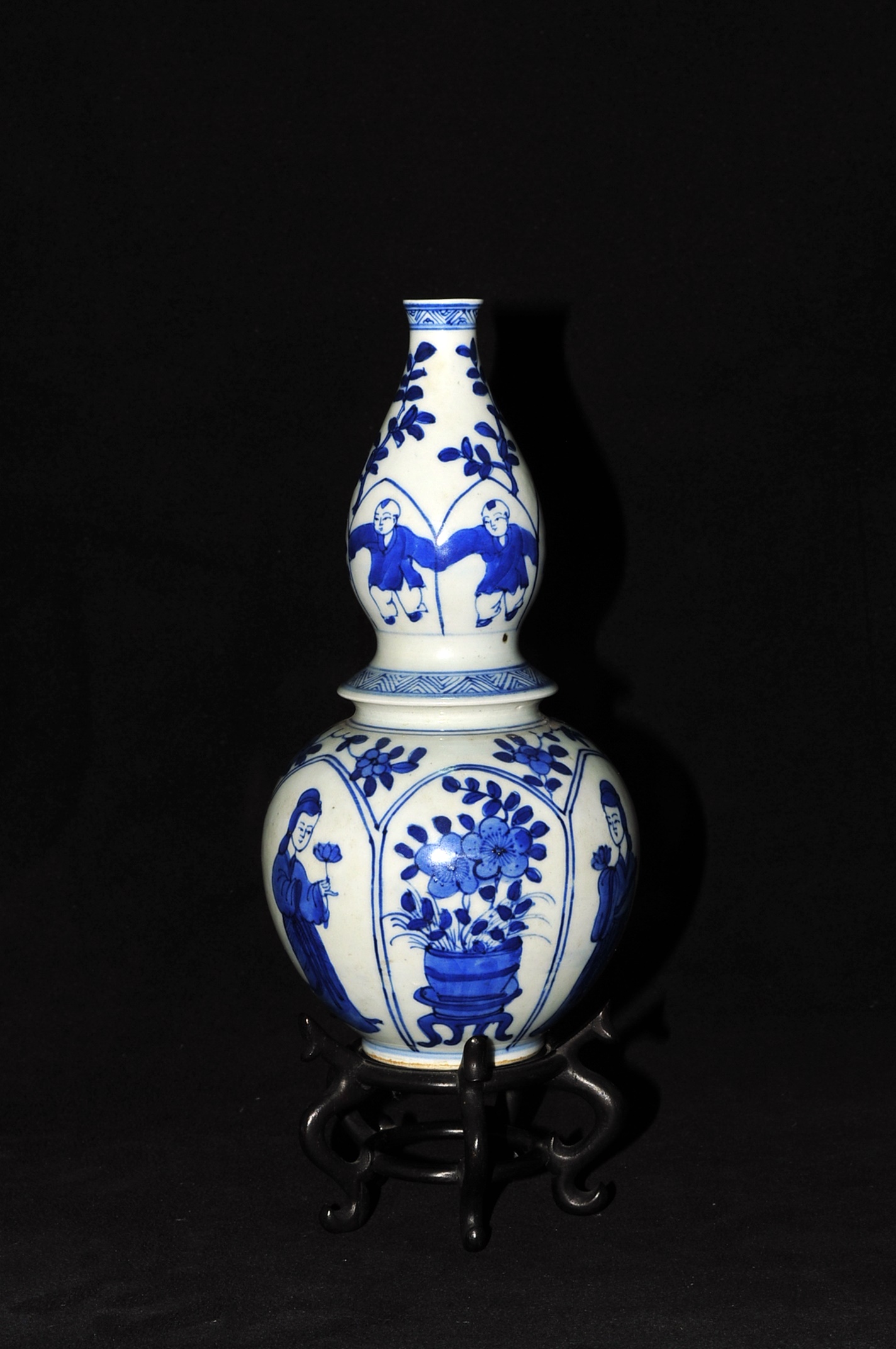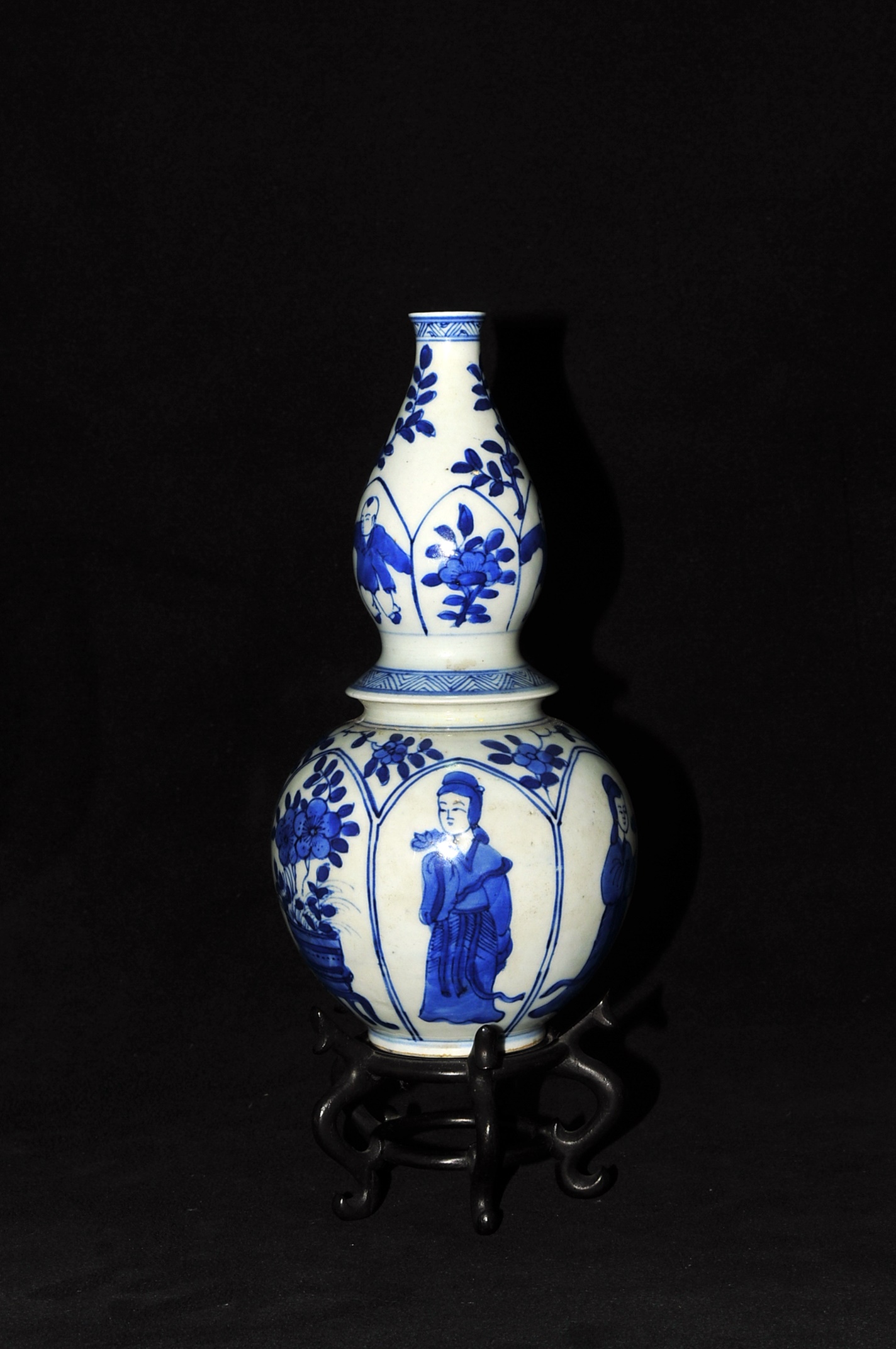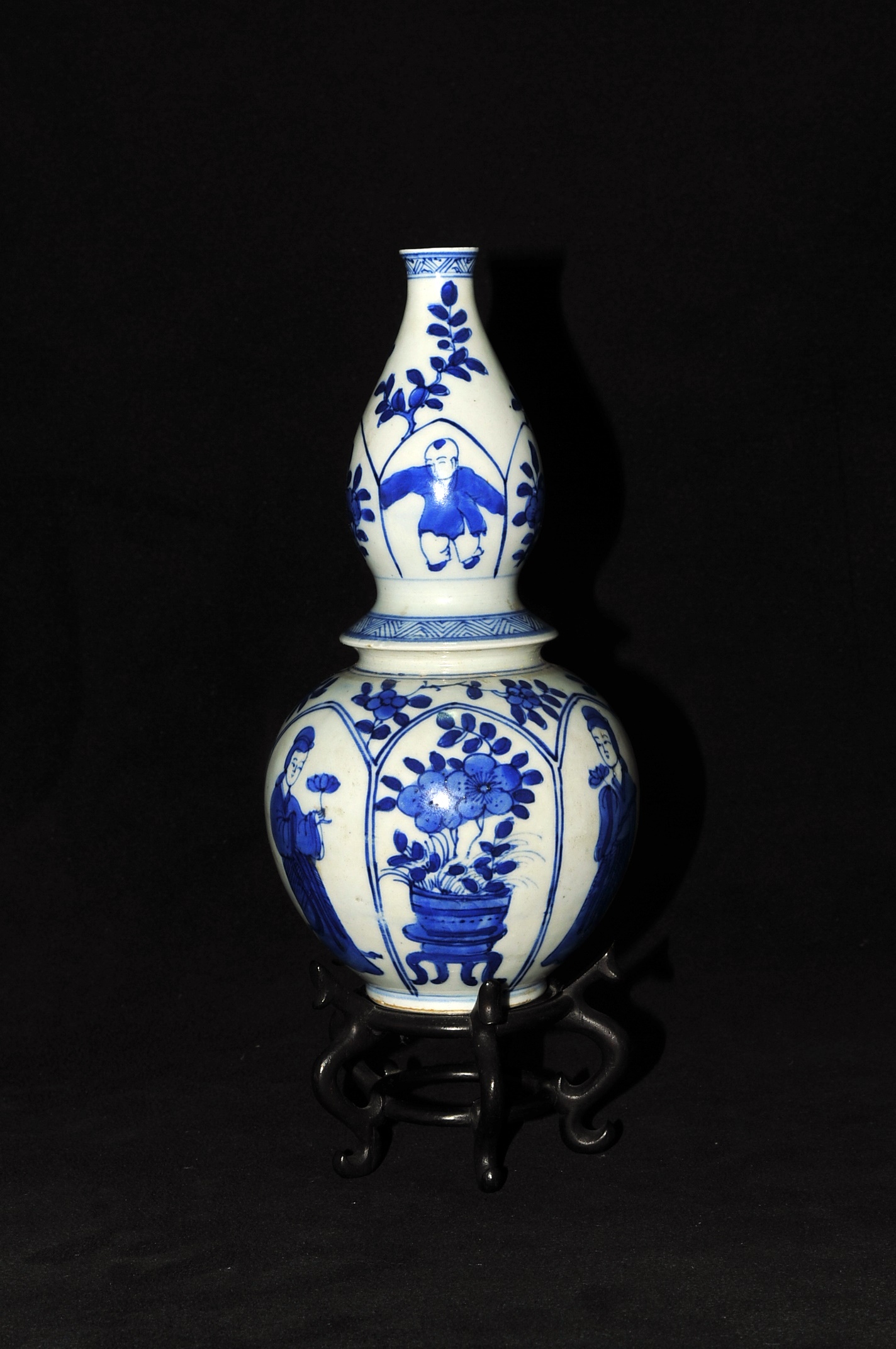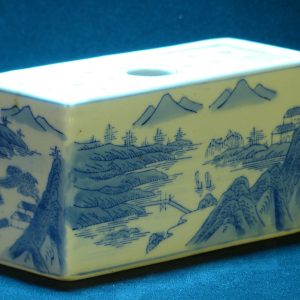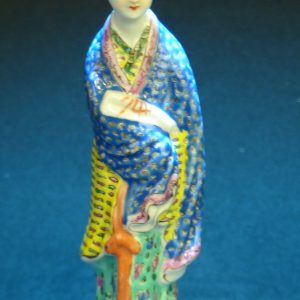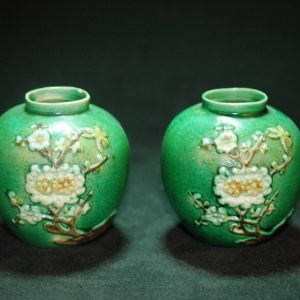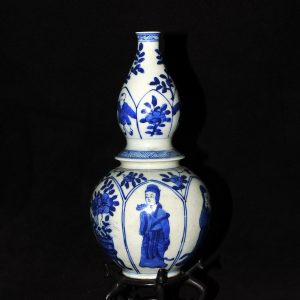Description
明晚 清初 花押款 青花开光 人物花卉纹 葫芦瓶
瓶底注:1636(明崇祯九年/皇太极改国号后金为大清)-1693
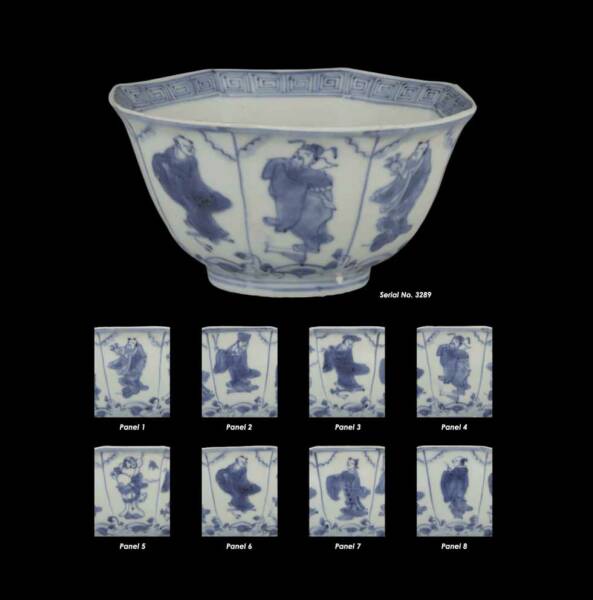
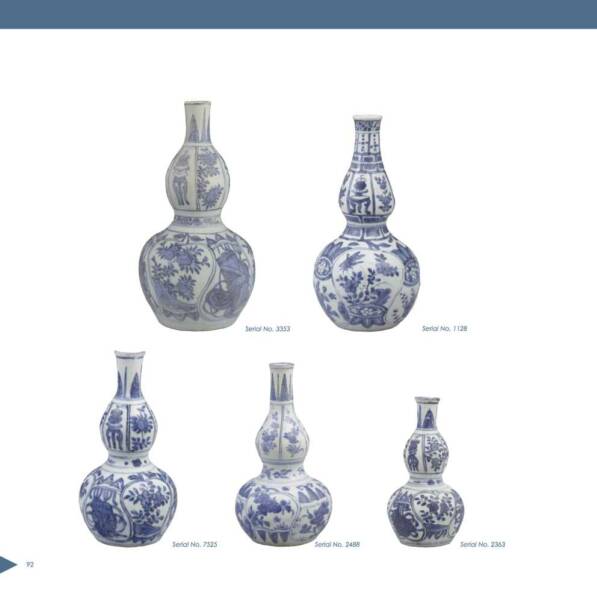
參考:國立故宮博物院 明晚期 青花瓷八仙葫蘆瓶
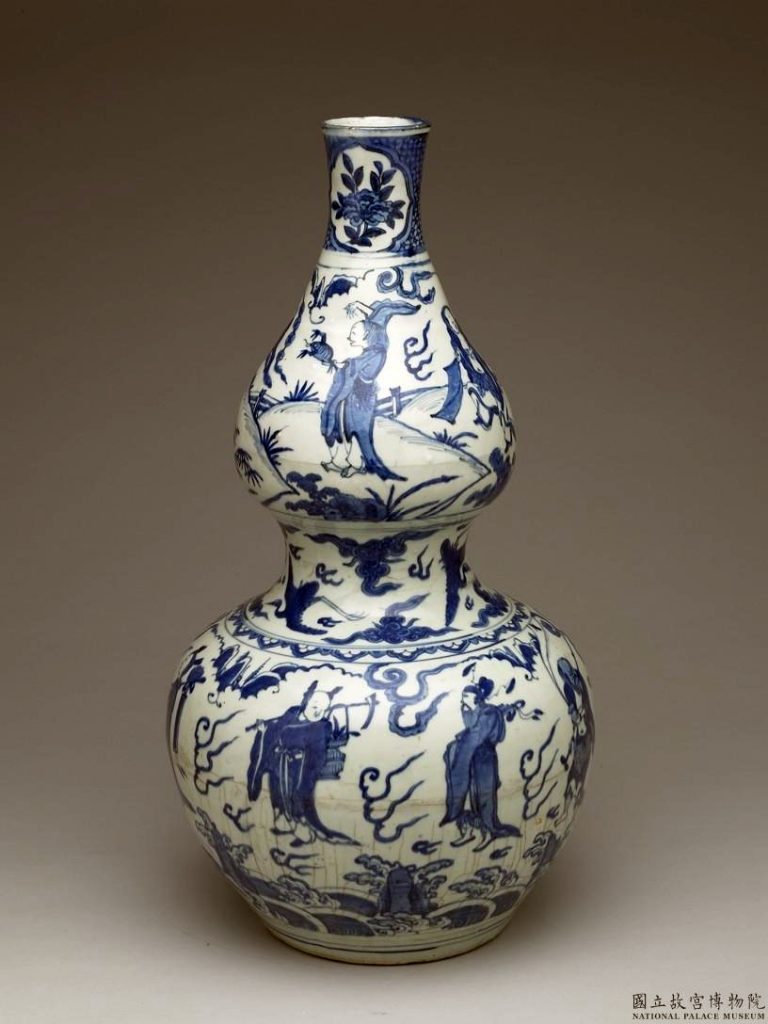
資料識別:中瓷003055N000000000
資料類型:陶瓷器
描述:白地青花瓷葫蘆瓶,葫蘆上段頸略長而直,小圓口;下段腹部上豐下斂;平底內凹成足。口部菱花形開光,開光內折枝花盛開,開光外滿繪魚鱗狀水波錦地。器中央束頸外壁繪仙鶴翔舞於雲間。葫蘆上腹外壁繪道教寒山拾得、合和二仙行走於山野間,下腹外壁則繪八仙浮昇於海面波濤之上。底外露胎,無款識。
日期:1500 A.D.-1650 A.D.
格式:高50.5公分 底徑15.5公分 口徑6.2公分
關聯:《故宮瓷器錄 第二輯 明(乙)》
参考:Cleveland Museum of Art
Porcelain Vase
19th Century
China, Qing dynasty
(1644-1911)
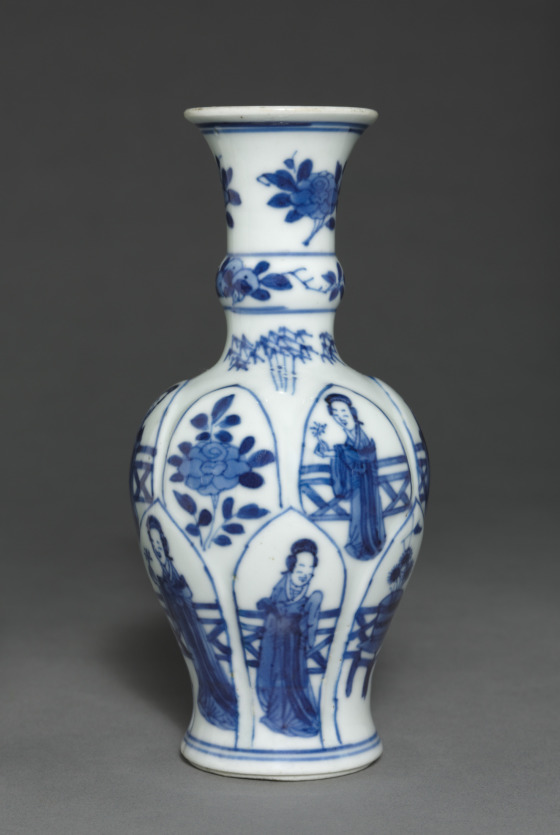
Overall: 14 cm (5 1/2 in.)
Bequest of James Parmelee 1940.945
Collection: China – Qing Dynasty
Department: Chinese Art
Type of artwork: Ceramic
Medium: Porcelain
Credit line: Bequest of James Parmelee
参考:SALE 12597
Chinese Export Art
New York|18 January 2017
LOT 258
A ‘HATCHER CARGO’ BLUE AND WHITE GARLIC MOUTH VASE 沉船海捞 明 空白期 青花蒜头瓶
TRANSITIONAL, MID-17TH CENTURY
Price realised
USD 3,000
Estimate
USD 3,000 – USD 5,000
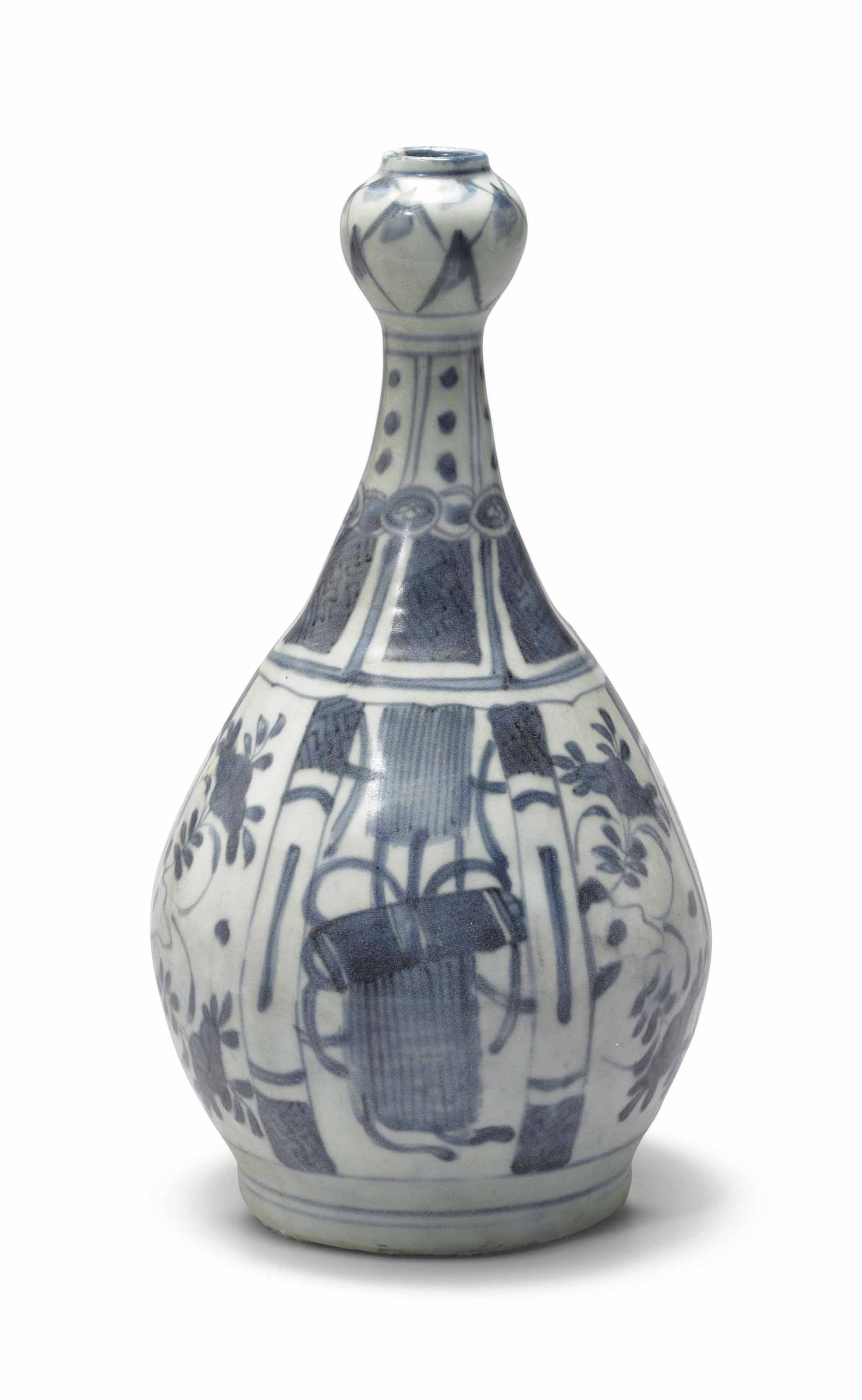
TRANSITIONAL, MID-17TH CENTURY
10 ½ in. (26.5 cm.) high
A ‘HATCHER CARGO’ BLUE AND WHITE GARLIC MOUTH VASE
TRANSITIONAL, MID-17TH CENTURY
10 ½ in. (26.5 cm.) high
The Hatcher Junk
1643-1646
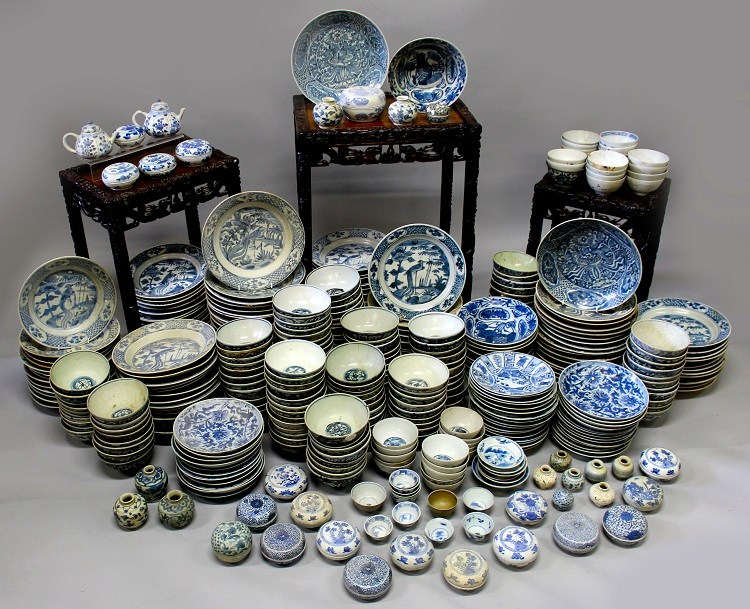
The Hatcher Cargo was recovered from the wreck of a Chinese junk in the South China seas port of Batavia (today Jakarta) by Captain Michael Hatcher in 1983, and was later sold in the Netherlands. They were a small part of what, at the time, was the largest cargo of Chinese porcelain ever recovered in good condition from the sea. Captain Michael Hatcher and his crew brought up about 25,000 pieces of unbroken porcelain from the Hatcher junk those sold through four sales at Christies Amsterdam. The very wide diversity and quality of many of the pieces created great interest, and the date was established by the existence in the find of two pieces with the Chinese cyclical date for 1643.
Captain Michael Hatcher and his crew brought up about 25,000 pieces of unbroken porcelain from the Hatcher junk. Those sold through four sales at Christies Amsterdam. Captain Hatcher returned to the site in 1985 and salvaged over 2,000 more pieces, most of which were sold through a London dealer, Heirloom and Howard. The great majority of the 25,000 pieces were Jingdezhen blue and white, but there were also interesting groups of celadon, blanc-de-Chine, coloured wares and provincial blue-and-white. (Sheaf & Kilburn 1988, pp.8-19)
The ship was almost certainly sailing from China to the Dutch base at Batavia from where cargoes were purchased and transhipped to Dutch East Indiamen for their journey to Europe.
The range of shapes of wares available in the Hatcher junk illustrates what a south Asian porcelain trading vessel of the mid-17th Century might be expected to contain. The cargo also includes objects which normally did not reach the West. This wreck should be seen in its historical context. There was a Dutch pewter jug found in the wreck, which certainly suggests a connection with the Dutch East India Company, (Vereenigde Oost-Indische Compagnie VOC), headquarters at Batavia. The native Ming dynasty was overthrown in 1644 and the resulting civil war substantially upset Chinese trade with the VOC and other western powers. The rebellion interrupted Junk trade to the VOC headquarters at Formosa, the entrepot for ceramics bound ultimately for Batavia. The contents of this wreck suggest a considerable conservatism in the production of Chinese domestic blue-and-white for the first half of the 17th Century. Types of kraak porcelain which were discovered in the Witte Leeuw wreck (which sank in 1613) are closely mirrored in the porcelain of this ship, 30 to 40 years later, it is often said that the Dutch were very conservative in their porcelain taste during the first half the 17th century. It may well be that the VOC went on buying kraak type wares, and the reason why such large amounts of dishes, bowls and jars survived especially in the Netherlands, is that, in fact, there was no export porcelain alternative readily available which the VOC could buy in quantity from Chinese trading Junks. Many of the smaller pieces offered from this wreck bear earlier reign-marks, mostly of the late Ming Emperors none unfortunately of Tianqi or Chongzheng, but equally none with Kangxi marks or cyclical dates for the earliest years of the Manchu Qing dynasty. (Amsterdam 1985, pp.7-8)
2011659
Shipwreck Porcelains – The Hatcher Junk (1643-1646)
Object 2011659
Dish
China
c.1643
Provenance: The Hatcher Collection, Christie’s Amsterdam, 14 March 1984 or 12 and 13 June 1984.
Height 47 mm (1.85 inch), diameter of rim 300 mm (11.81 inch), diameter of footring 159 mm (6.26 inch), weight 831 grams (29.31 ounce (oz.))
Dish on footring, slightly scalloped flat rim. Decorated in a light shade of underglaze blue under a degraded glaze with a bird at a riverbank beside flowering plants and branches of berried fruit encircled by an eight-pointed scalloped medallion. The sides and rim with large panels filled with peach and auspicious symbols and narrow panels filled with a diaper or scale pattern and tassels. On the reverse four broad panels
According to Rinaldi dishes found in the Hatcher Cargo can be classified as Border VII.3 dishes. Borders in this group show a great variety in their decorative motifs. The most common bears the sunflower motif alternating with large and simply drawn symbols. Dishes with similar border were found among the shards from the São Gonçalo, a Portuguese ship that sank along the south-east coast of South Africa in 1630. (Rinaldi 1989, pp.106-108)
The Dutch habitually placed their orders for plates and dishes in terms of ‘full, half, third, quarter and eight sizes’ which must have represented dimensions understood by the Dutch, the Chinese traders with whom they dealt and the potters. Actual measurements are almost never stated in the VOC records, and it is likely that there was in fact no common standard of measurement understood by all parties. Another standardizing factor would have been the use of moulds. These dishes were thrown on a wheel and then pressed over a mould to produce the indented panels that are so characteristic of Kraak wares. (Sheaf & Kilburn 1988, p.37)
In total 148 of these 300 mm (11.81 inch), dishes, decorated with a bird at a riverbank beside flowering plants and branches of berried fruit were sold by Christie’s Amsterdam, 25 dishes were sold at Amsterdam 1984/1, lot 144-147, 123 dishes were sold at Amsterdam 1984/2, lots 129-132, 141 and 345-349 and 65 similarly sized dishes with identical centre but different panel decoration were sold at Amsterdam 1984/2, lot 904-912)
For similarly decorated dishes, please see:
Chinese Blue and White, (A. Frank, Studio Vista, London, 1969), p.61.
Fine and Important Late Ming and Transitional Porcelain, recently recovered from an Asian vessel in the South China Sea. The Property of Captain Michael Hatcher. Auction catalogue Christie’s Amsterdam, 14 March 1984, pp.30-31, lot 141.
Kraak porcelain. A moment in the history of trade, (M. Rinaldi, Bamboo Publishing Ltd, London 1989), p.106, Pl.97.
Condition: Firing flaws to the rim and footring, some very shallow glaze rough spots to the rim, a hairline to the rim and a frit and chip to the inner footring.
References:
Sheaf & Kilburn 1988, pp. 32-37
Amsterdam 1984/1, lot 144-147
Amsterdam 1984/2, lot 129-132, 141 and 345-349
Amsterdam 1985, pp.7-8
Howard Farrar 1987
Rinaldi 1989, Pl. 97
Howard 1997, cat. 16
参考:纽约大都会博物馆 清康熙 青花开光花卉人物小酒壶 Small wine pot or teapot with a lid
1662–1722
Chinese
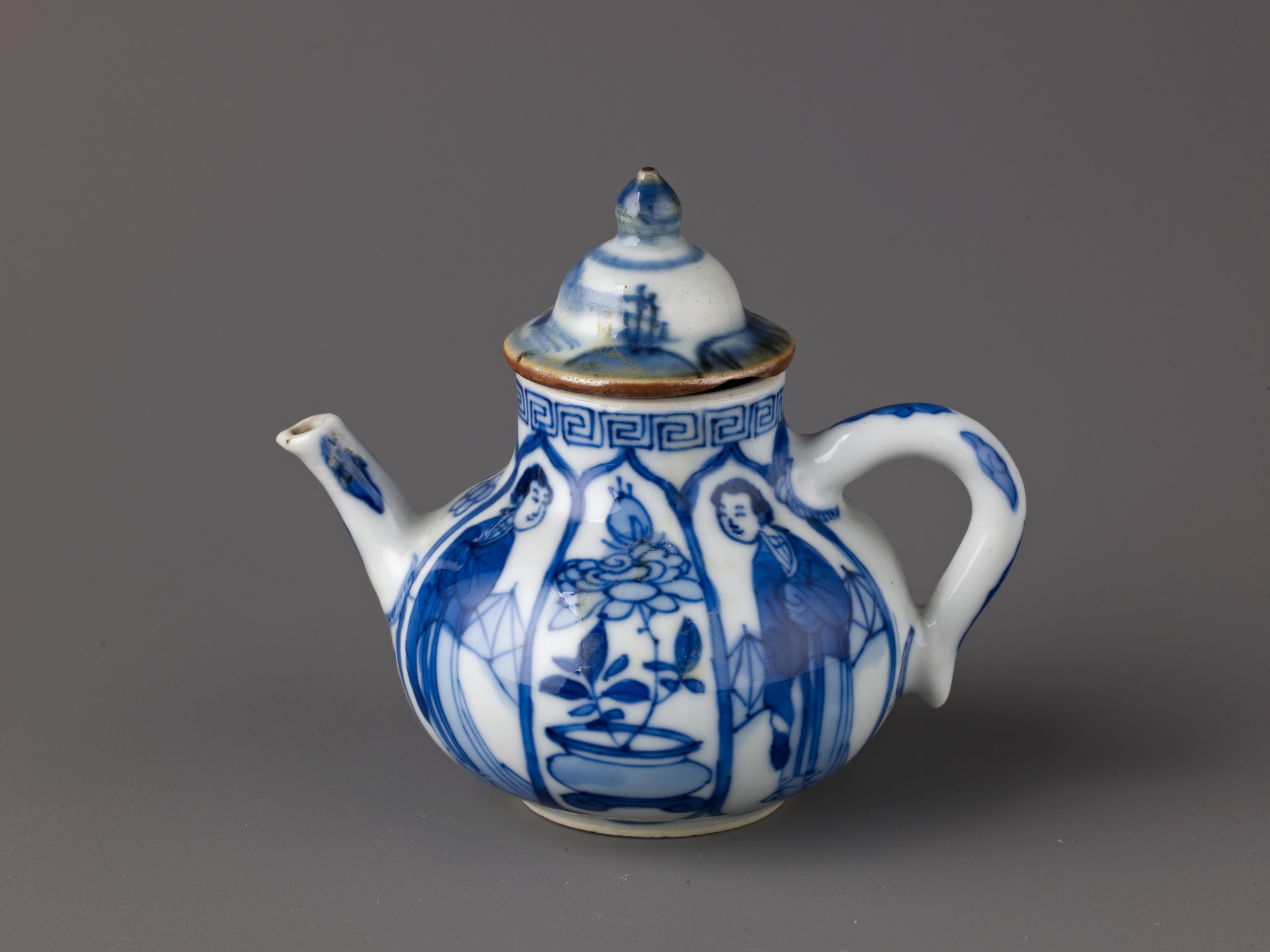
Object Details
Artist:Chinese , Qing Dynasty, Kangxi period
Date:1662–1722
Culture:Chinese
Medium:Porcelain painted in underglaze blue.
Dimensions:Height without lid: 2 1/4 in. (5.7 cm.)
Classification:Ceramics
Credit Line:Robert Lehman Collection, 1975
Accession Number:1975.1.1709
Catalogue Entry
This small vessel is similar to 1975.1.1710, 1975.1.1711 and 1975.1.1712 (and apparently purchased en suite with them), but it exhibits a squat pear-shaped body instead of a depressed globular form. The lid is probably a later replacement. The spout is chipped.
Catalogue entry from Suzanne G. Valenstein. The Robert Collection. Decorative Arts, Volume XV. Wolfram Koeppe, et al. The Metropolitan Museum of Art in association with Princeton University Press, 2012, p. 316.
Provenance
[H.R. Hancock, London]. Acquired by Robert Lehman through Hancock in October 1934.
Timeline of Art History
Timelines
Central and North Asia, 1600-1800 A.D.
China, 1600-1800 A.D.

![[临渊阁]天地一家春](https://www.antiquekeeper.ca/wp-content/uploads/2023/03/cropped-Asian-Art-Wallpaper-Painting3-6-3.jpg)
